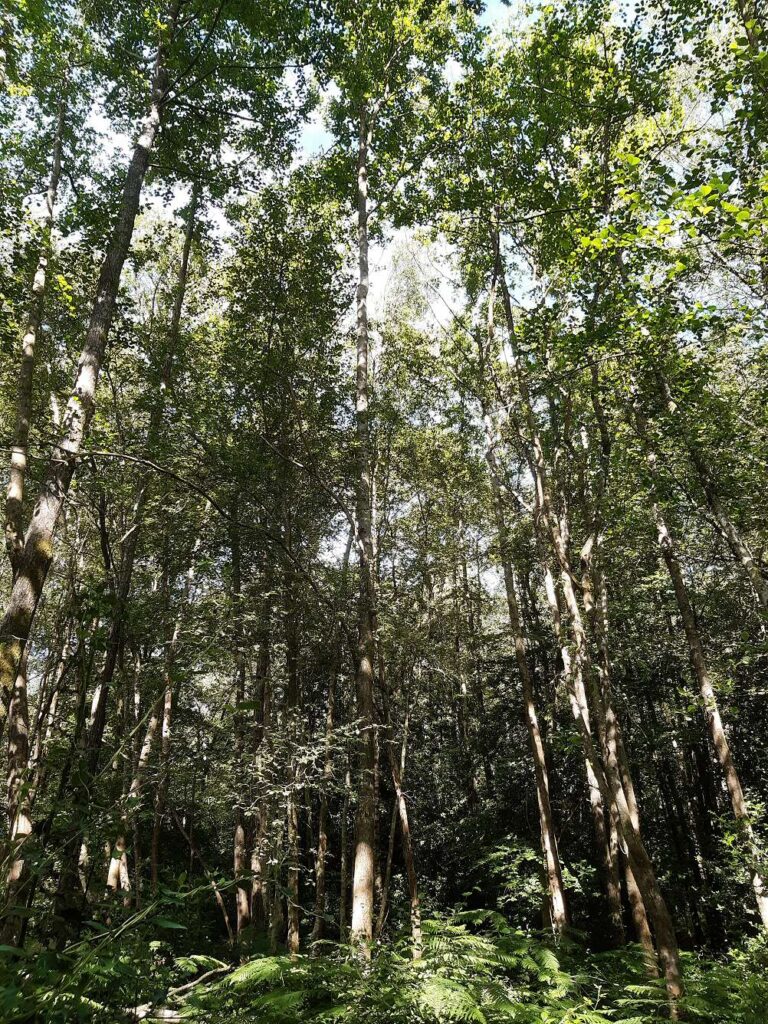
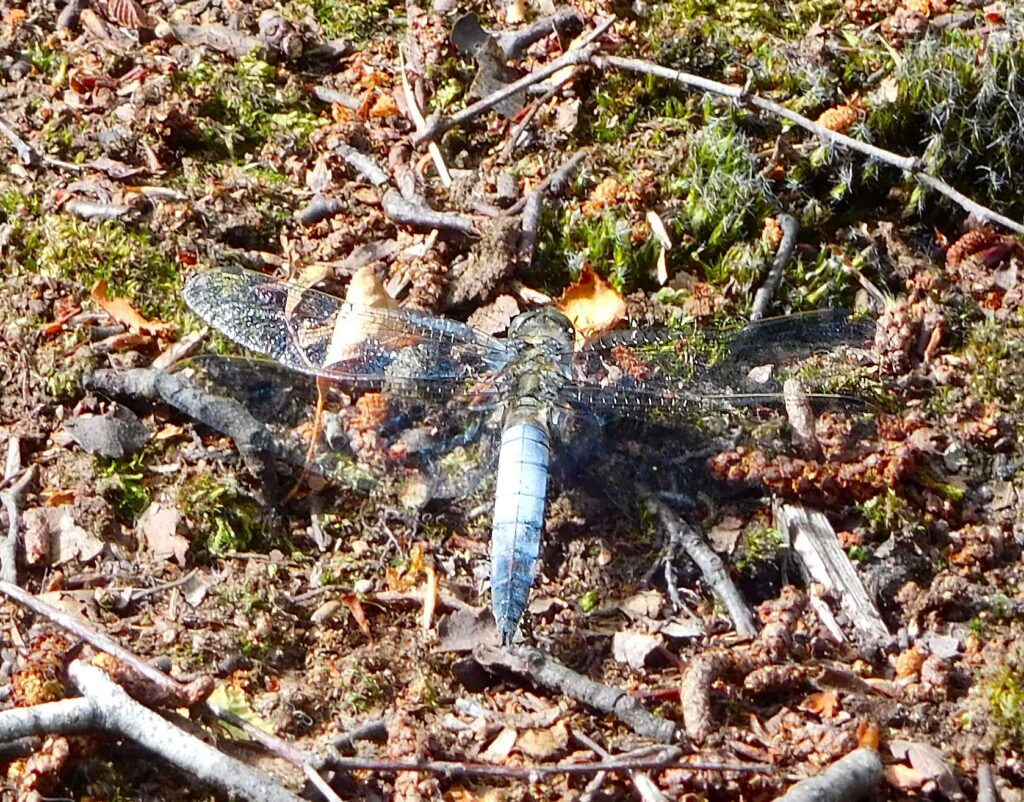
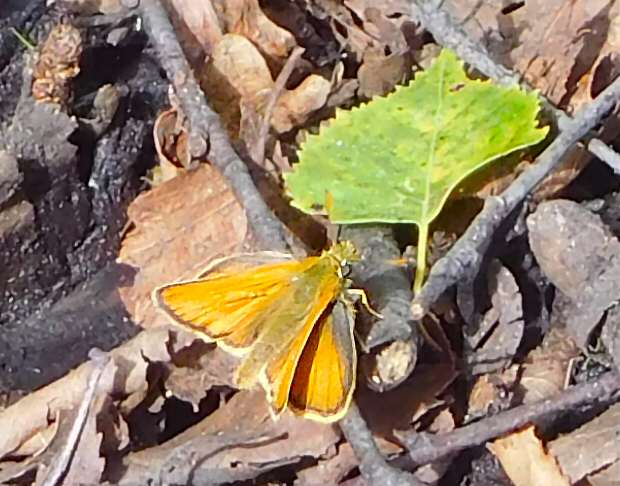
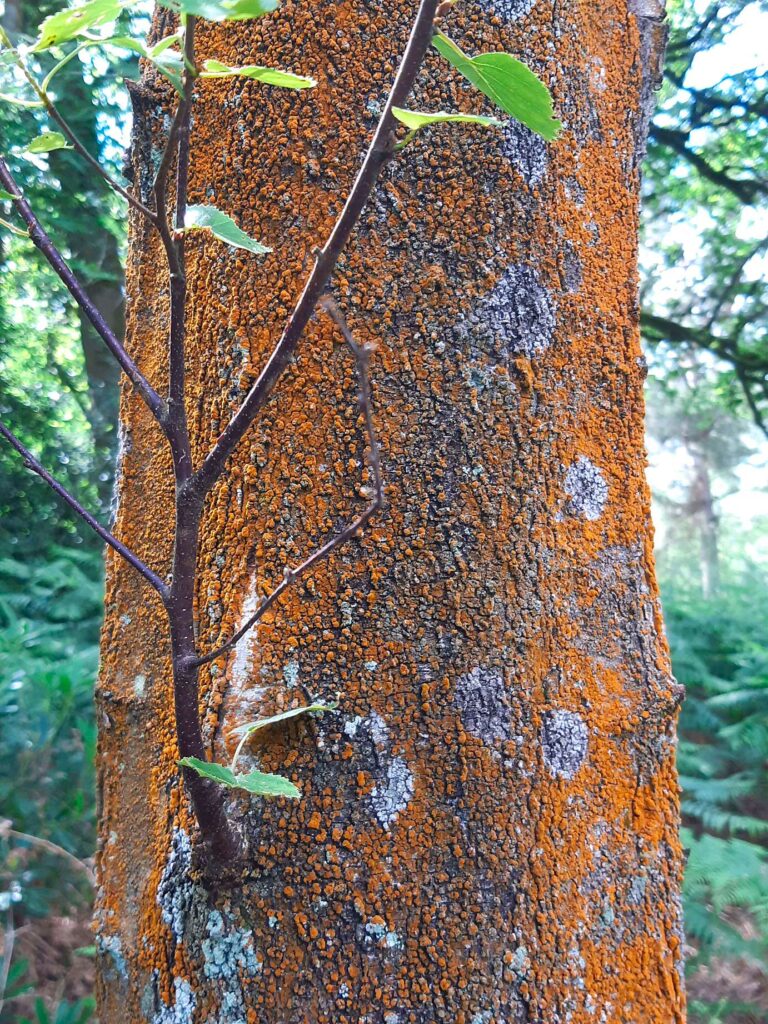
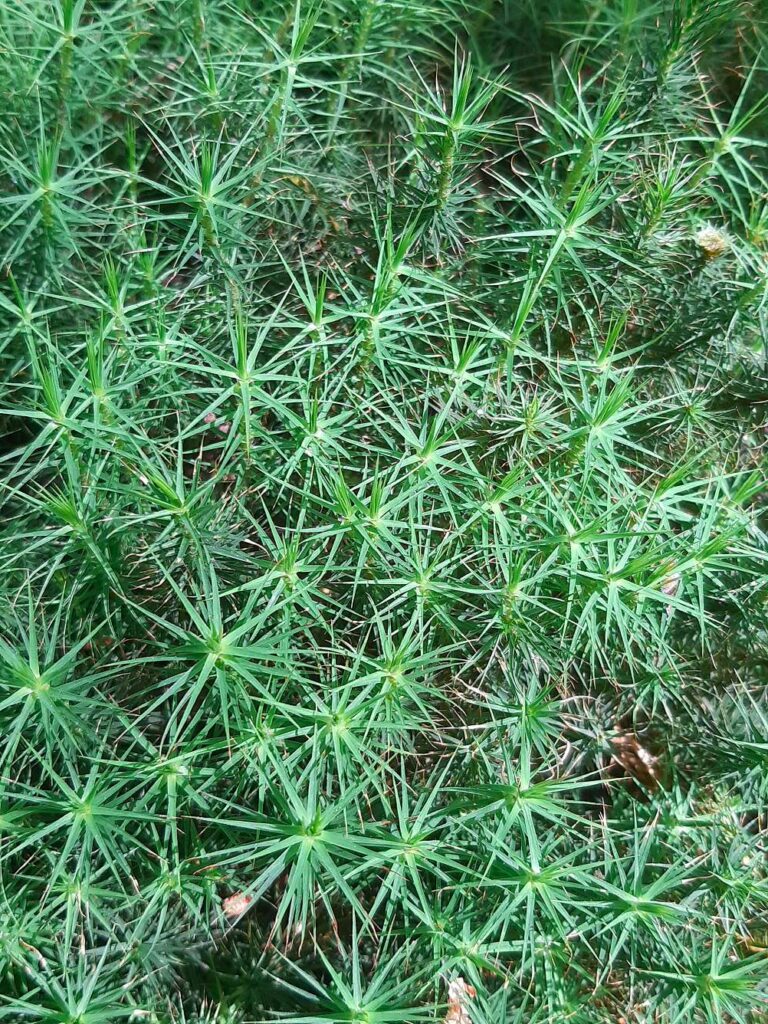
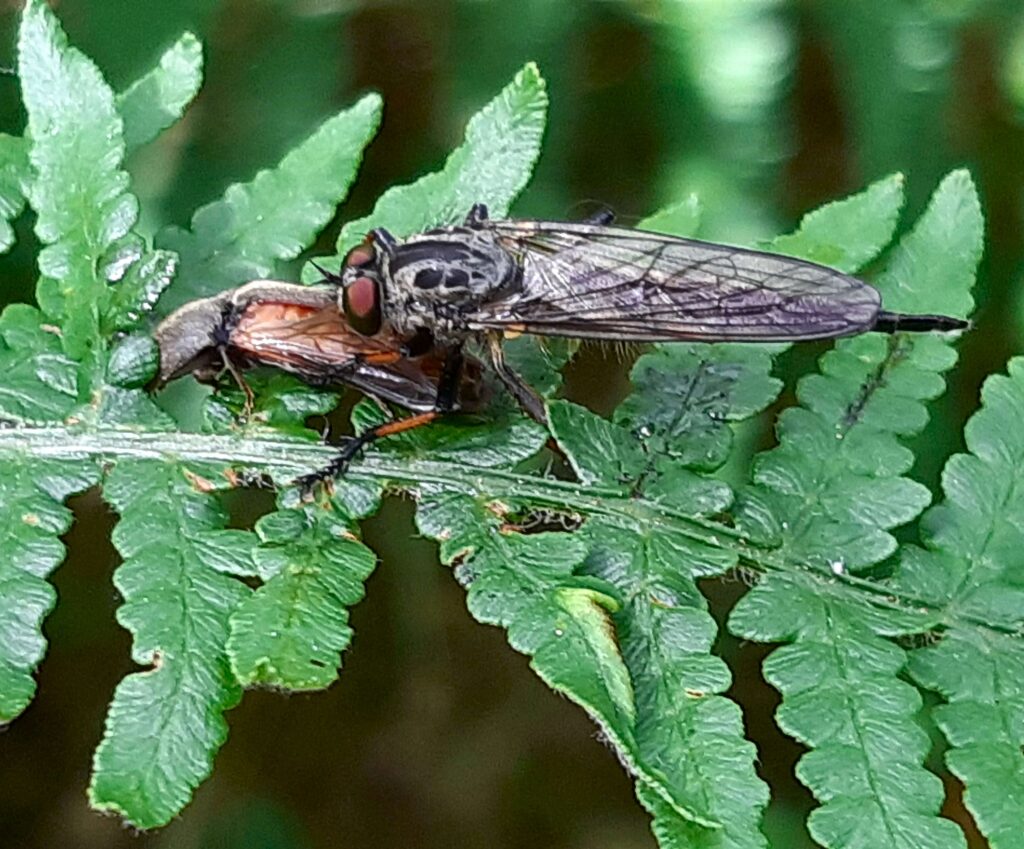






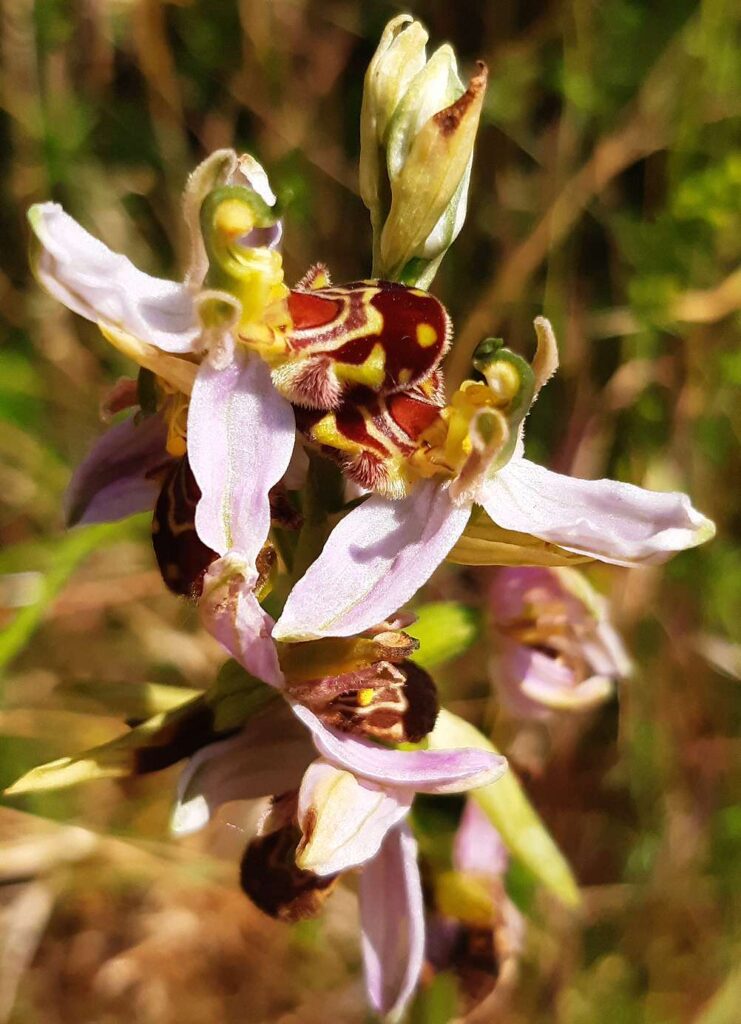
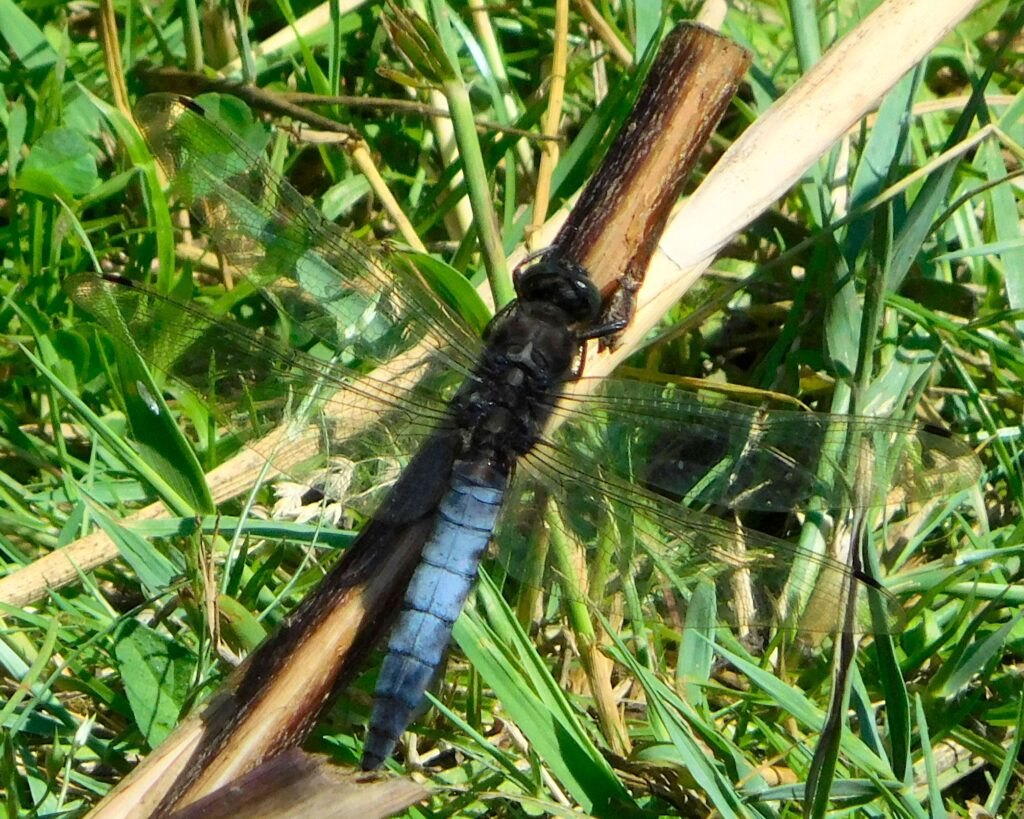
The whole of the wetland was sparkling with Emperor Dragonflies patrolling the pools: a few females laid eggs by Water-Lilies, the males occasionally chasing prey, or a rival. The margins were full of Azure Damselflies, nearly all males: I saw one pair in wheel formation.
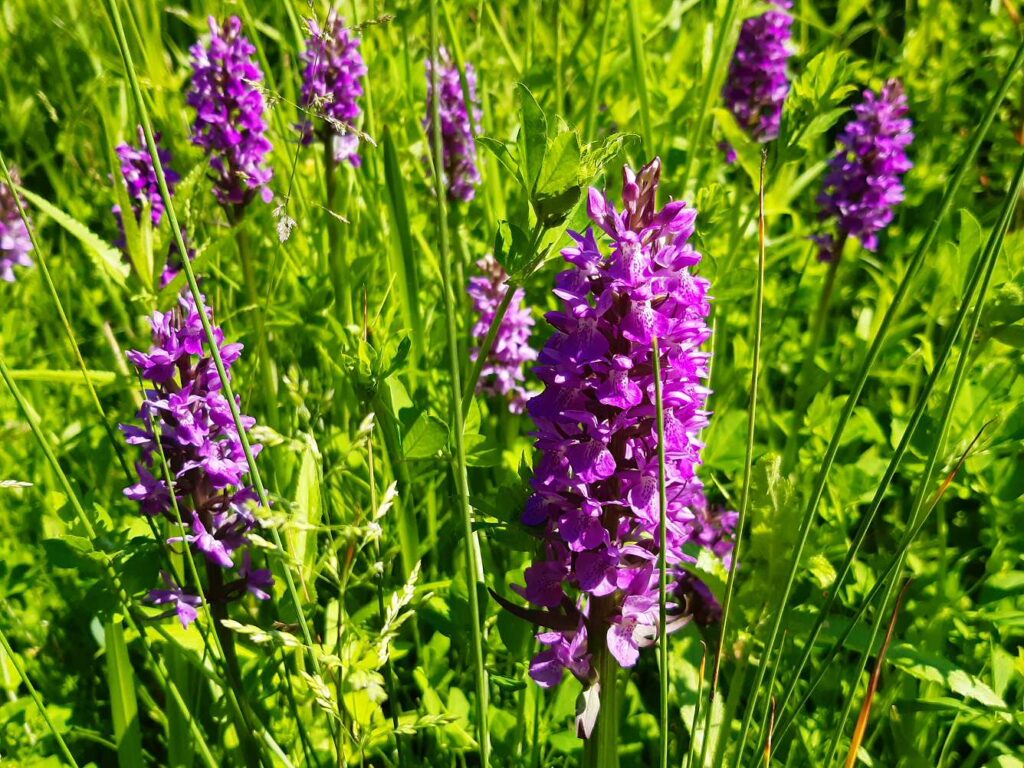
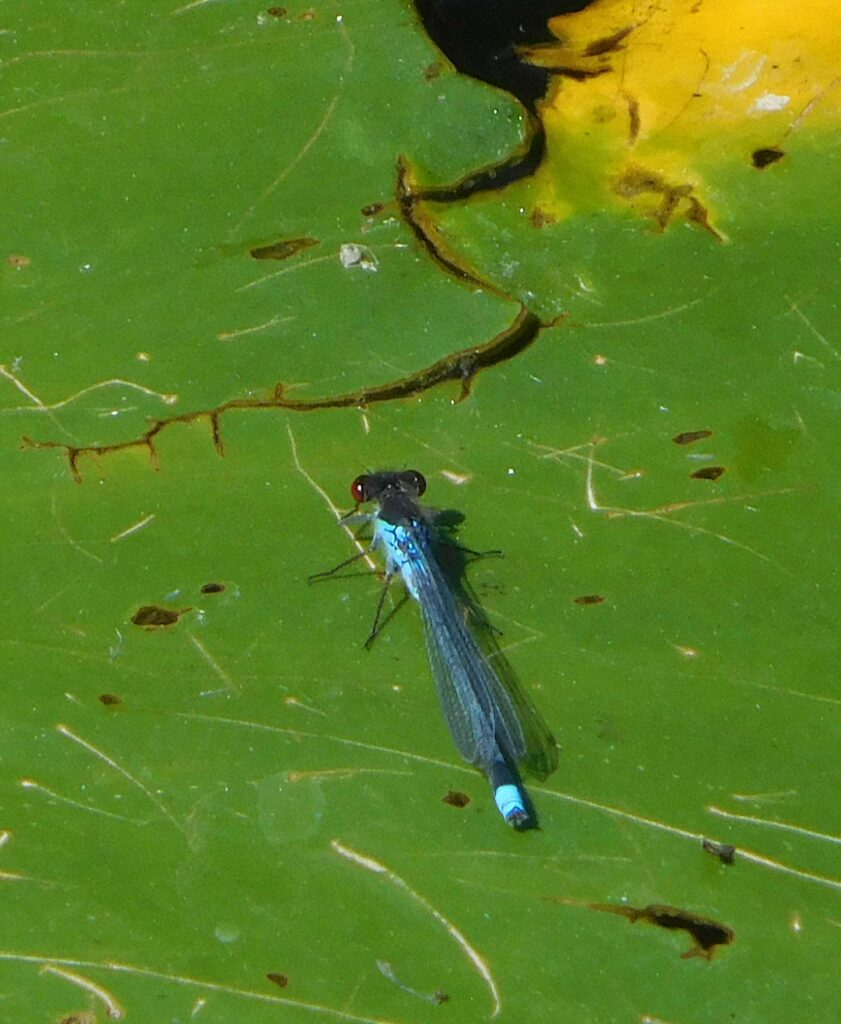
Several Red-Eyed Damselfly males displayed on lily-pads, chasing off rivals; occasionally an Azure came by too. Over one or two of the smaller pools, a Hairy Dragonfly patrolled; one of them had an aerial tussle with a similarly-sized red dragonfly, I think a Common Darter.
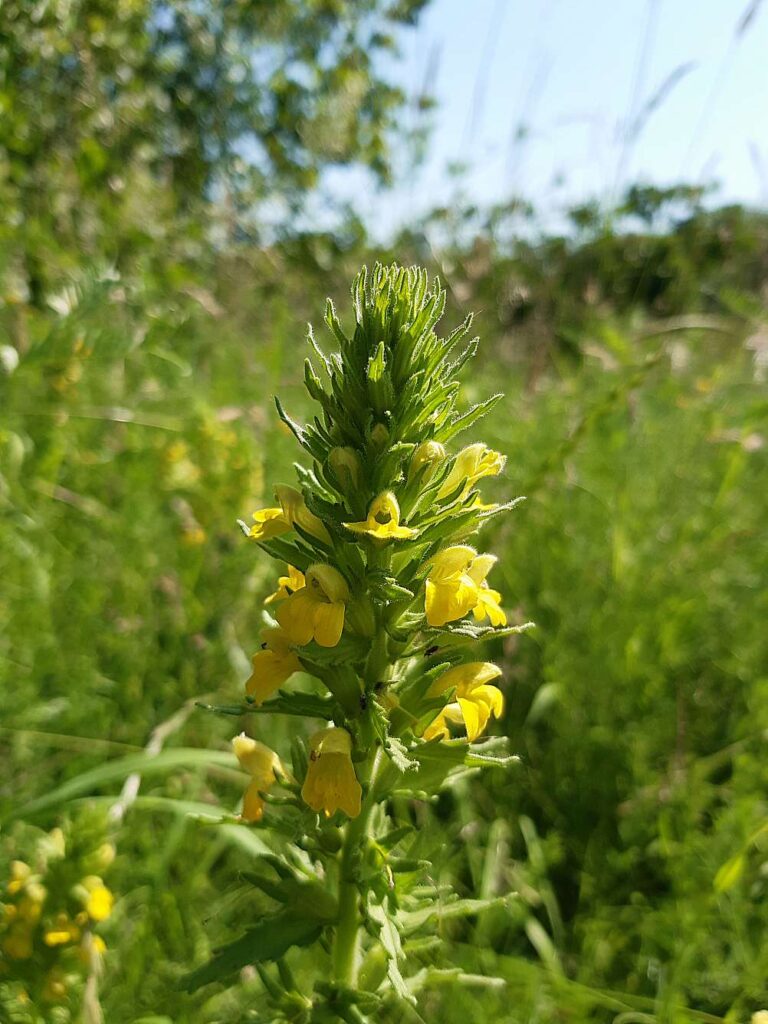
Overhead, quite a few Sand Martins caught insects over the water (well, the Wetland Centre does sport West London’s only Sand Martin bank, an artificial river cliff), along with a few Swifts, and I think exactly one Swallow … it feels as if something terrible has happened to these populations. They have to migrate across the Sahel, the Sahara, the Mediterranean, and numerous populations of hungry village boys and keen shooters, so it’s something of a miracle there are any left: and that’s not even speaking about climate change.
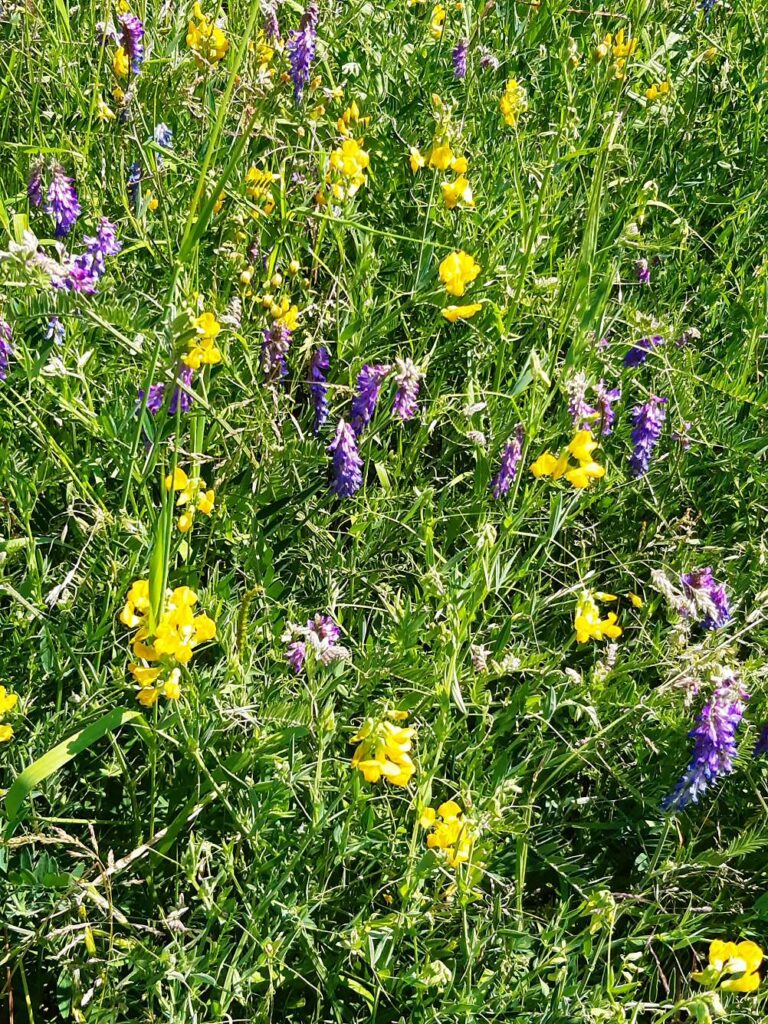
A couple of Common Terns, presumably those breeding on the Wetland Centre’s lake islands, made their bright and cheery waterbird calls as they wheeled about, searching for glimpses of tiny fish to dive in and catch.
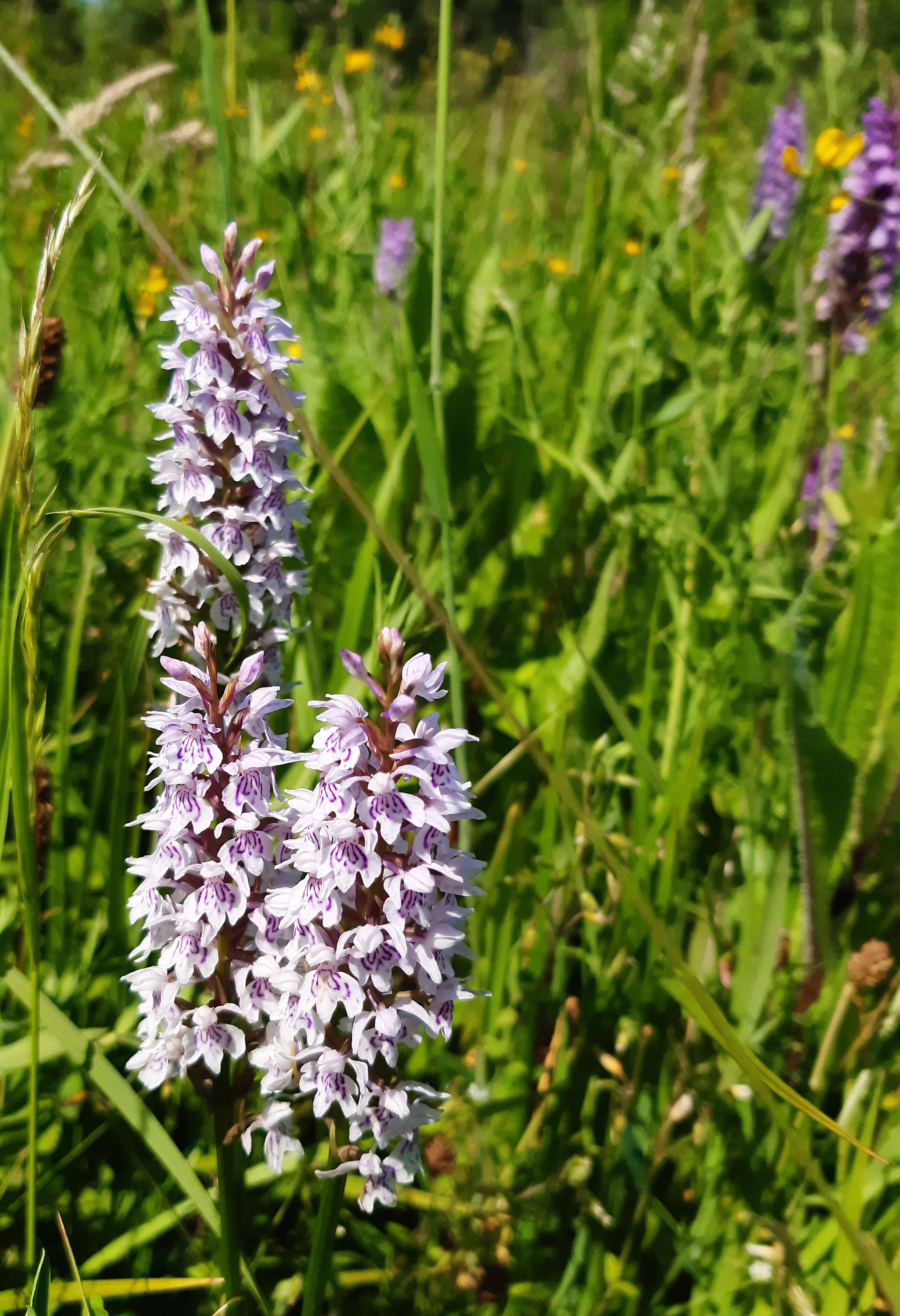
There were only a few butterflies about – a Red Admiral, a Holly Blue, a couple of Speckled Wood, some Whites, a female Brimstone. For me, the bees and pollinators looked well down on normal, too. Amidst the warmth of the day, the beauty, the peace, and the brilliant colours, it is a sombre tale of decline.
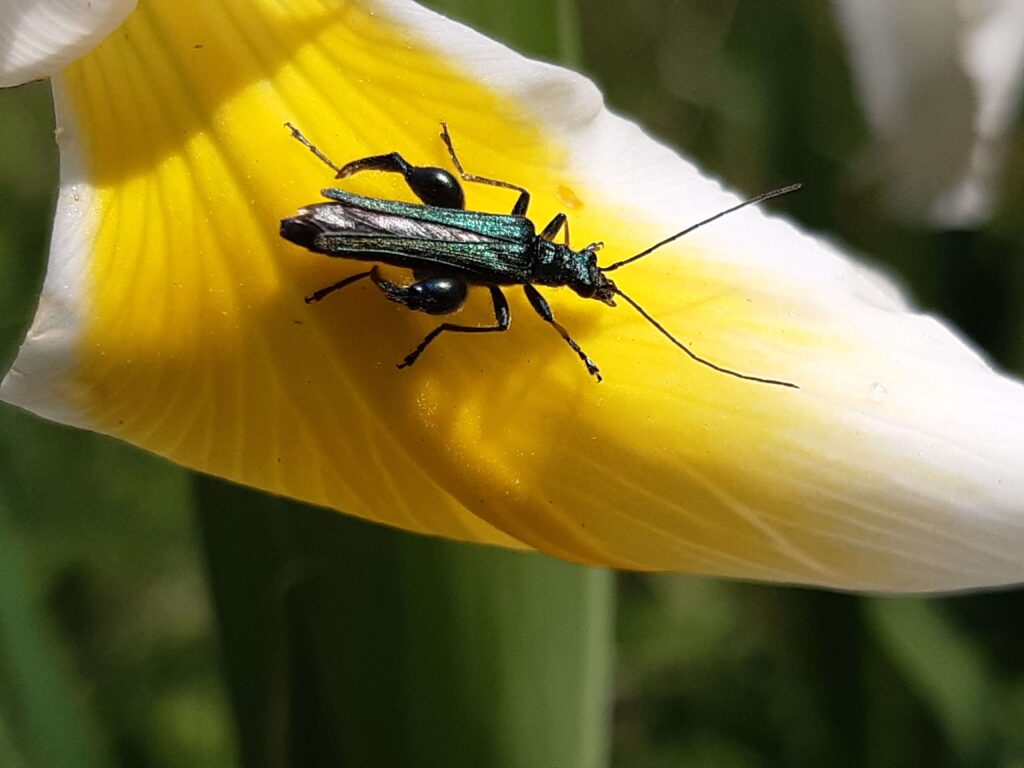
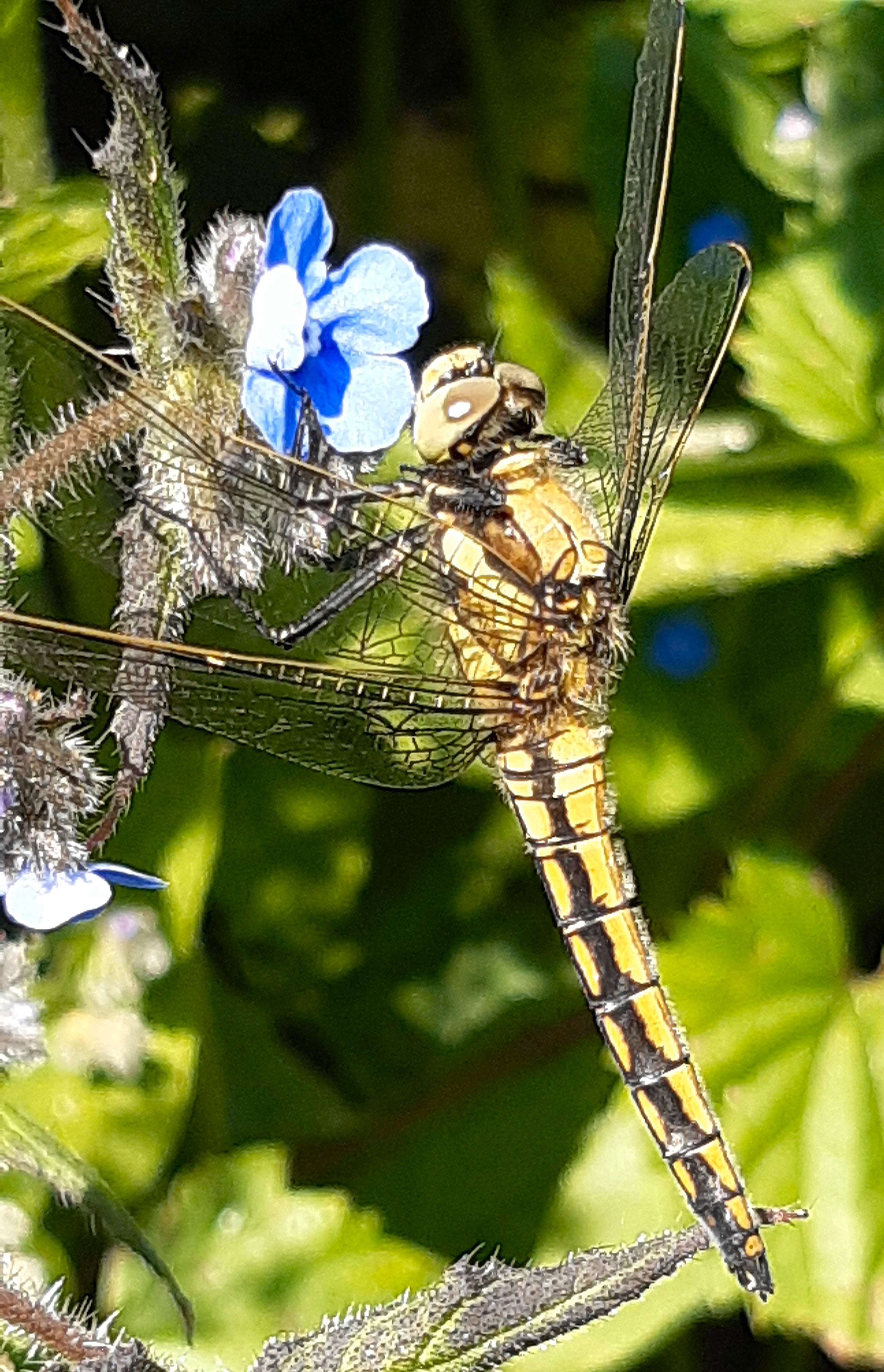
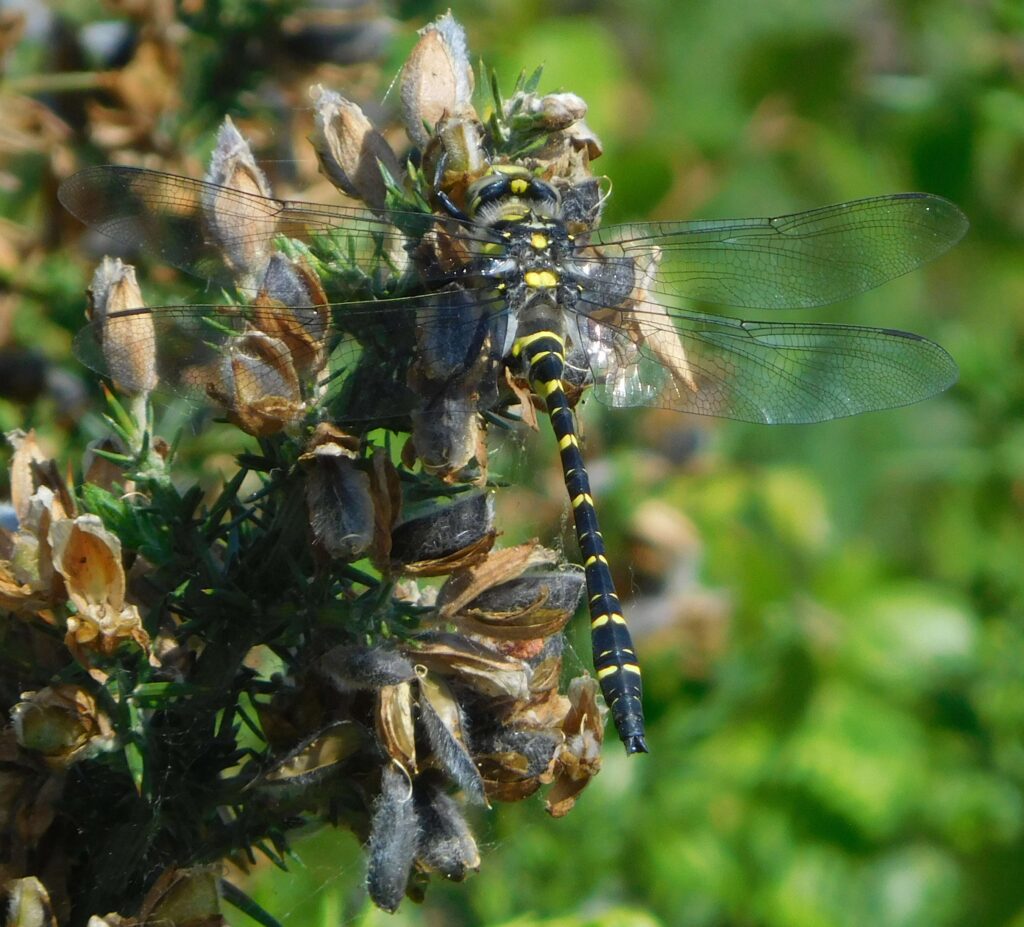
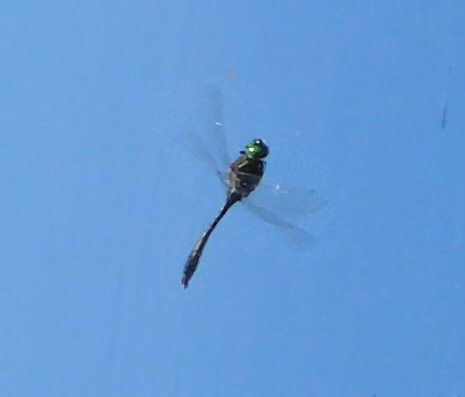
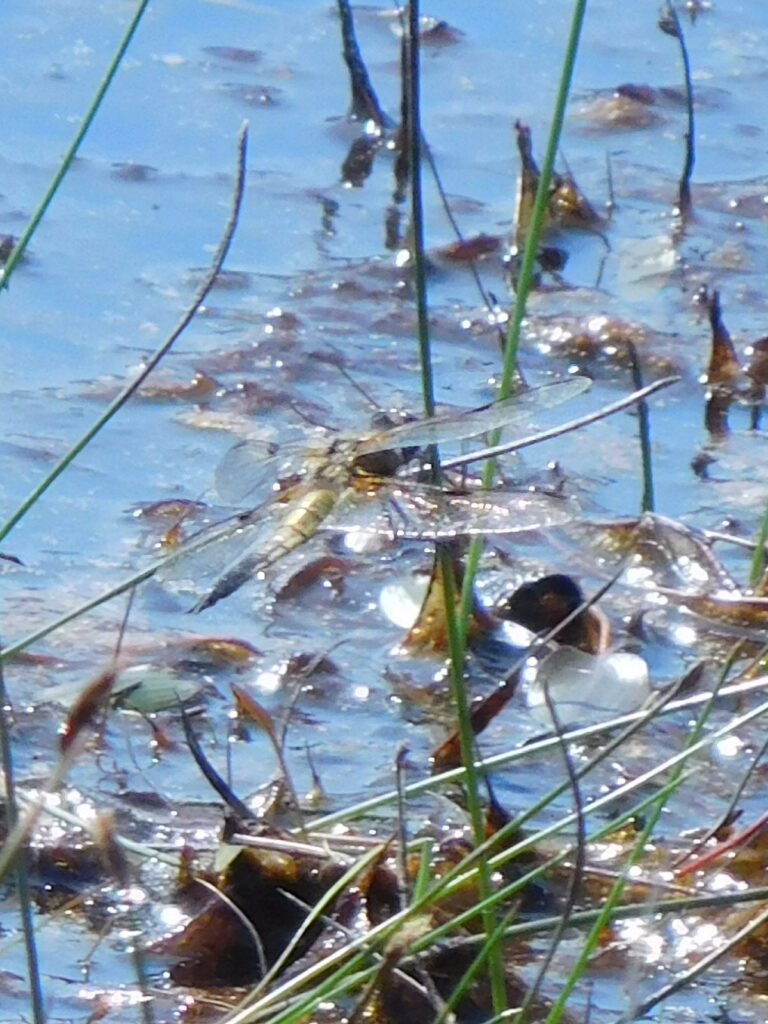
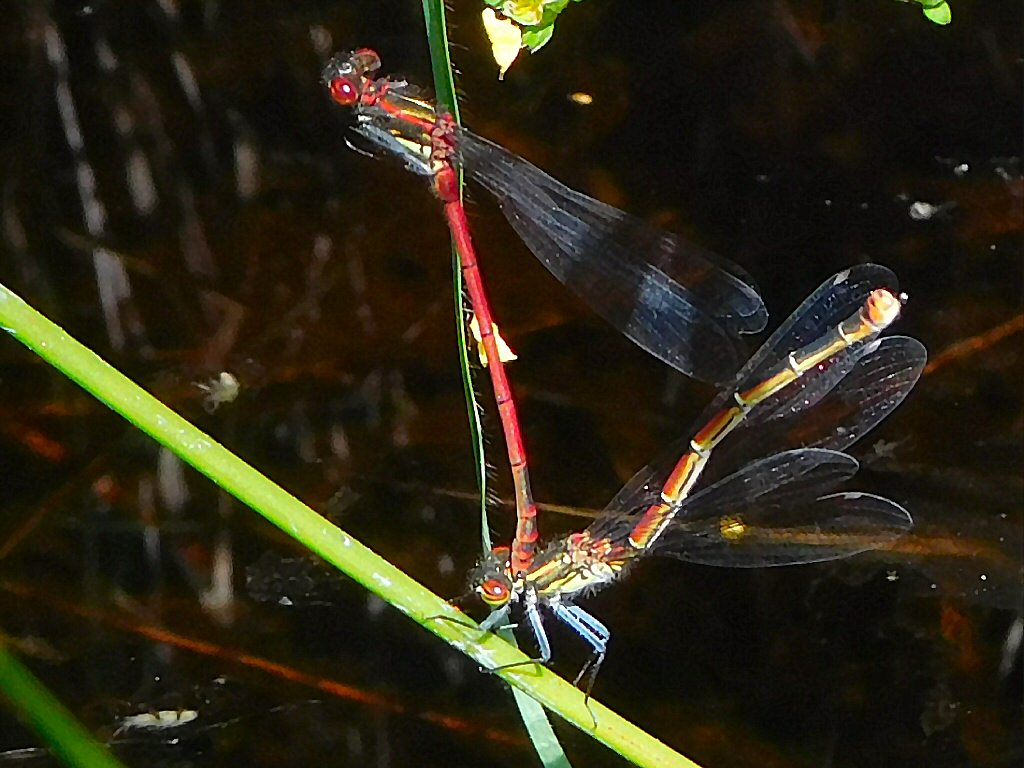
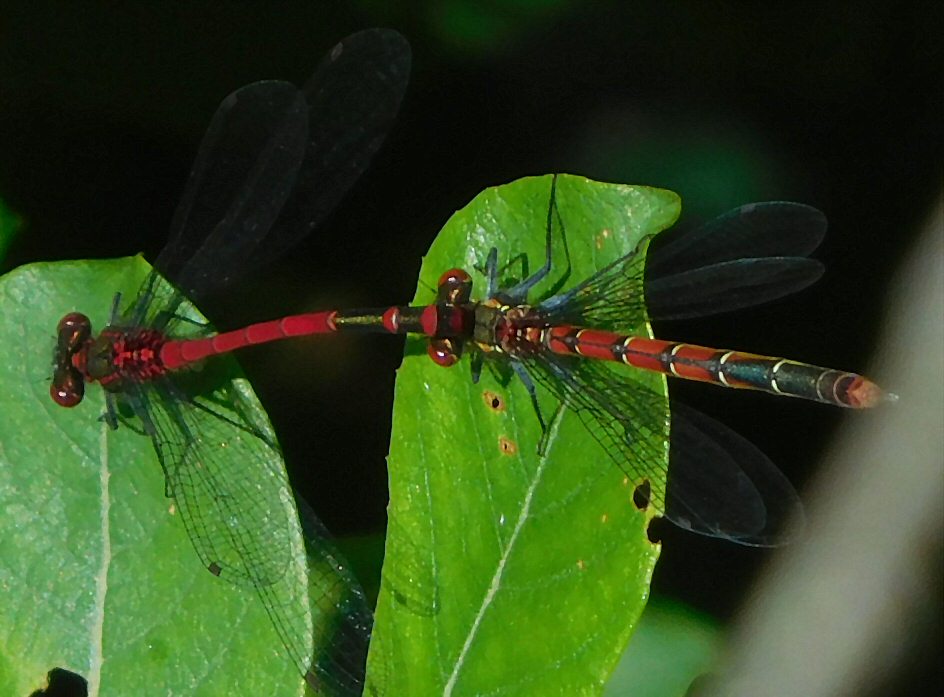
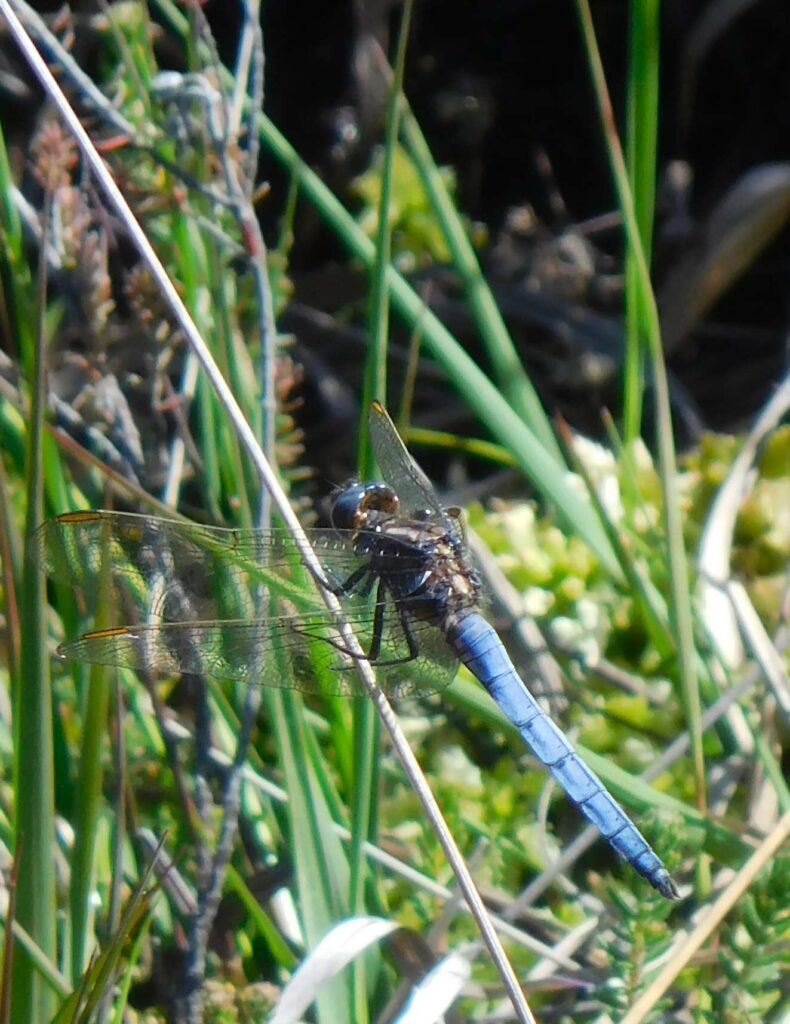
Also seen: one Emperor over the Moat Pond; Common Darters; Southern Hawker; Common Blue Damselfly.
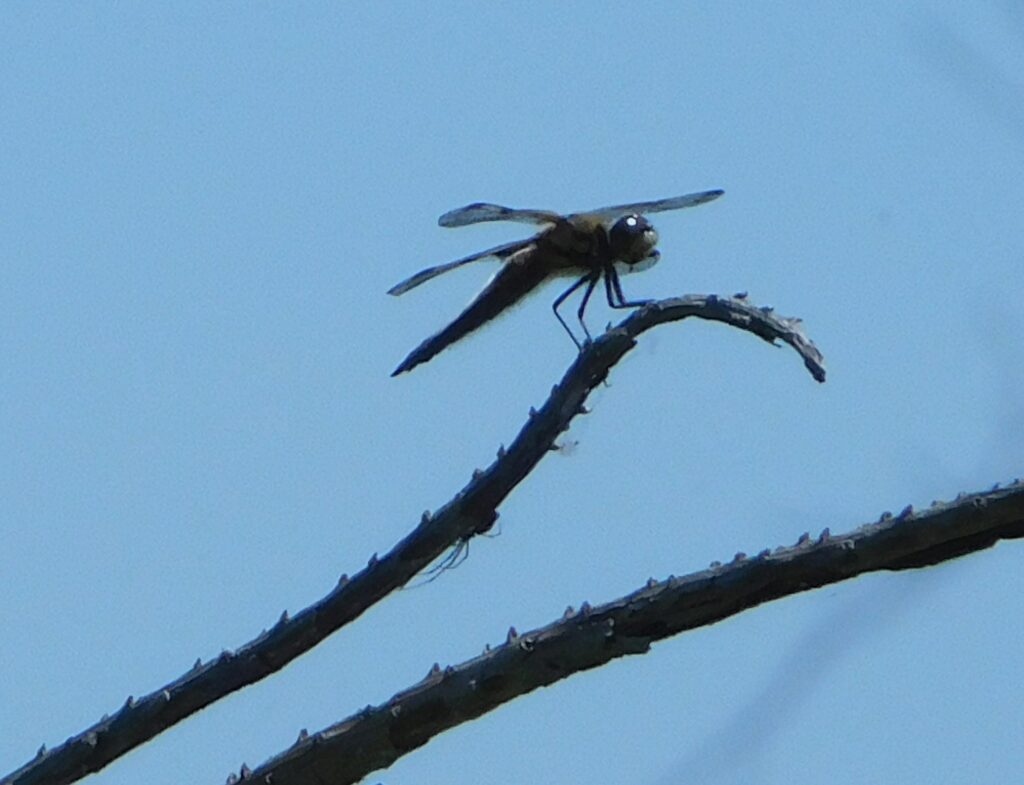
There were few birds about, but they were good: the only pair of Curlews nesting in Hampshire, both seen, and both heard, flying from their nestplace over the bog, calling continuously (and evocatively) and landing separately; Dartford Warbler, a terrific view, the long tail cocked, and hopping about on a tuft of dry grass; Stonechat; Skylark; Buzzard. On the main lake, just Mallard, Coot, Tufted Duck; on the Moat Pond, Moorhen.
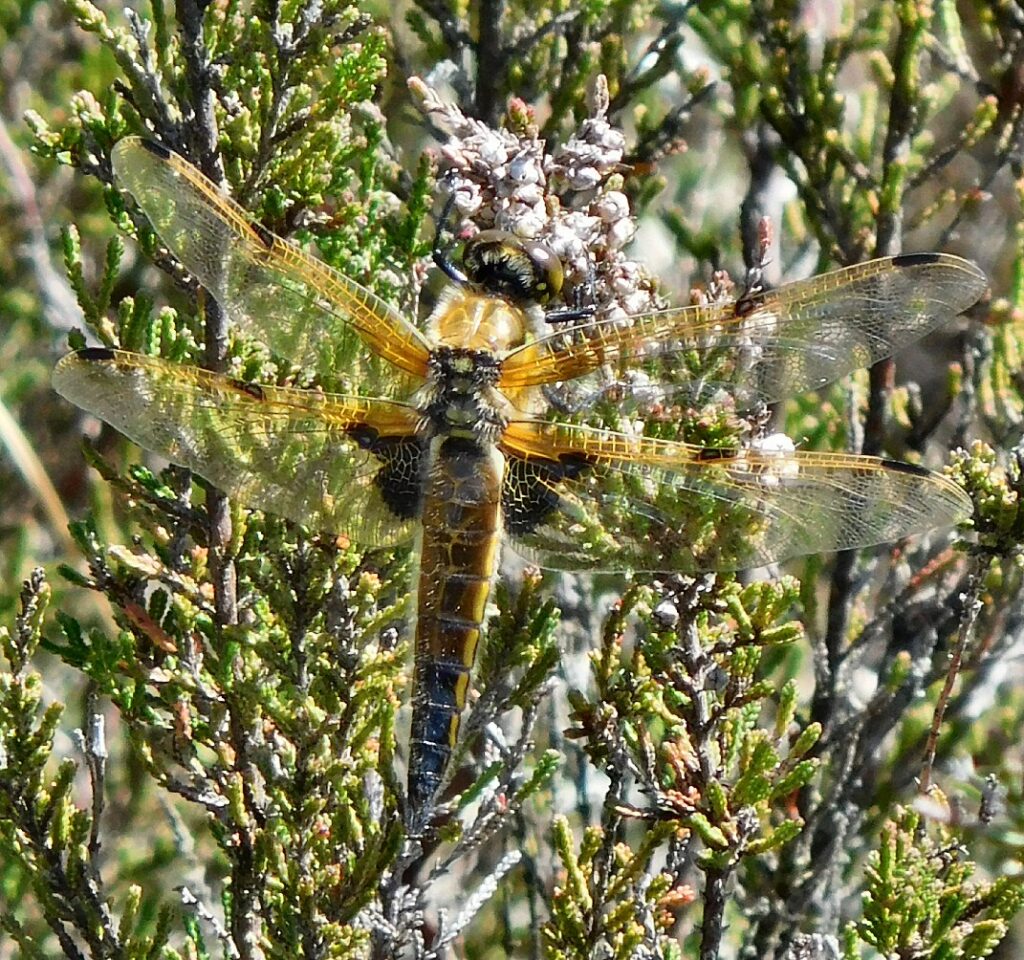
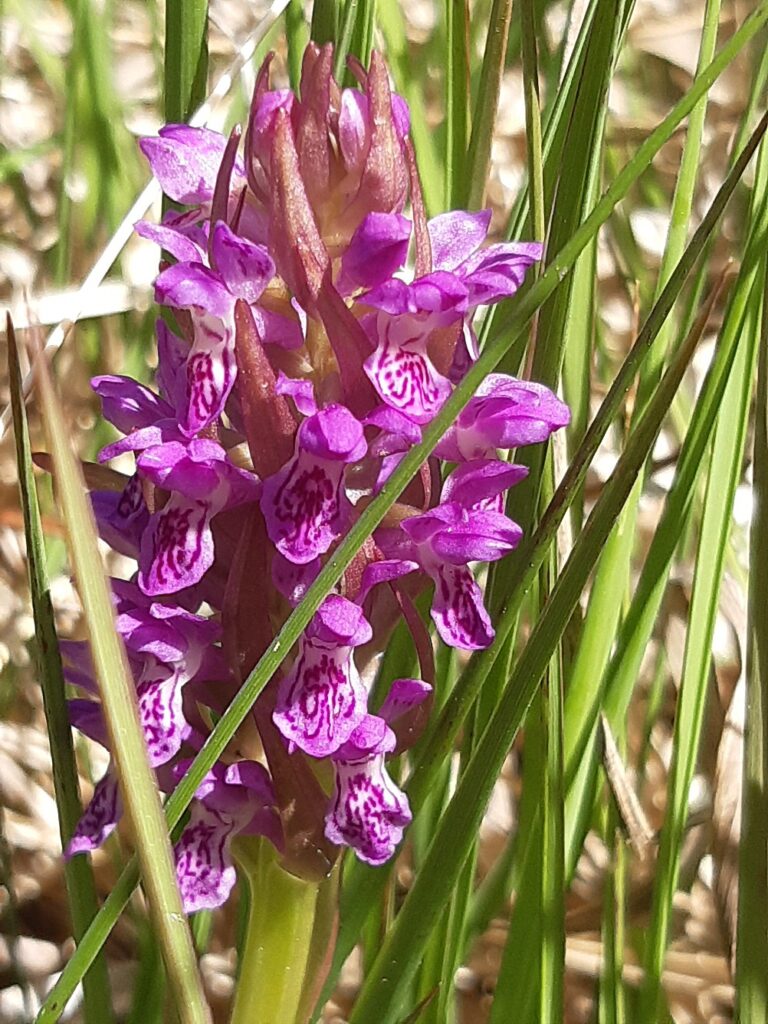
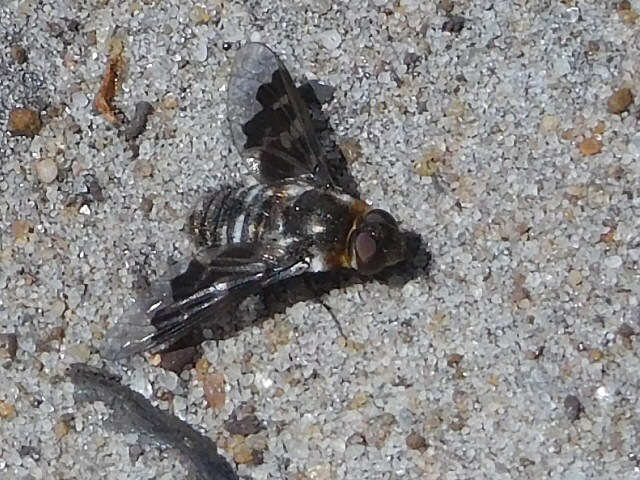
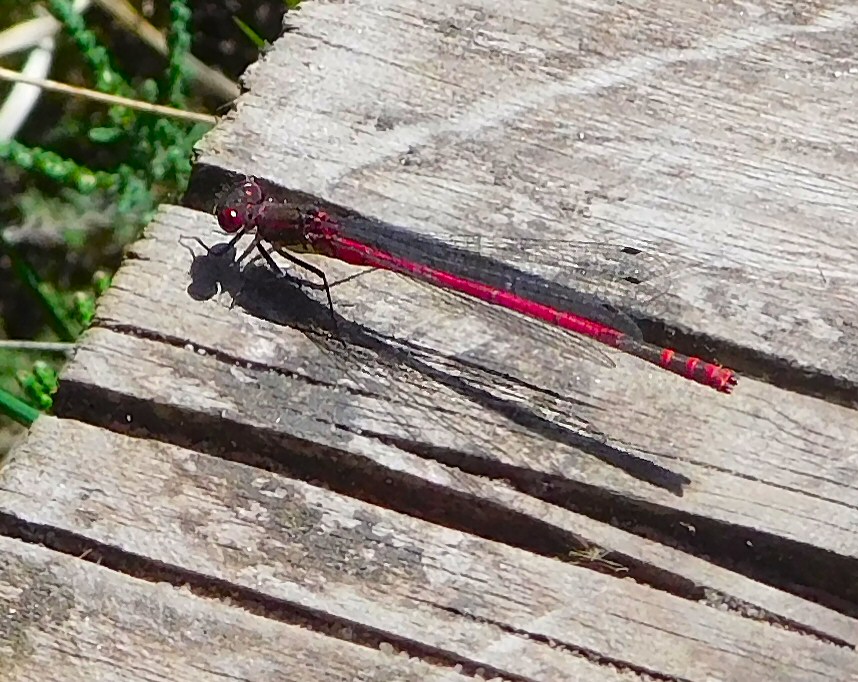
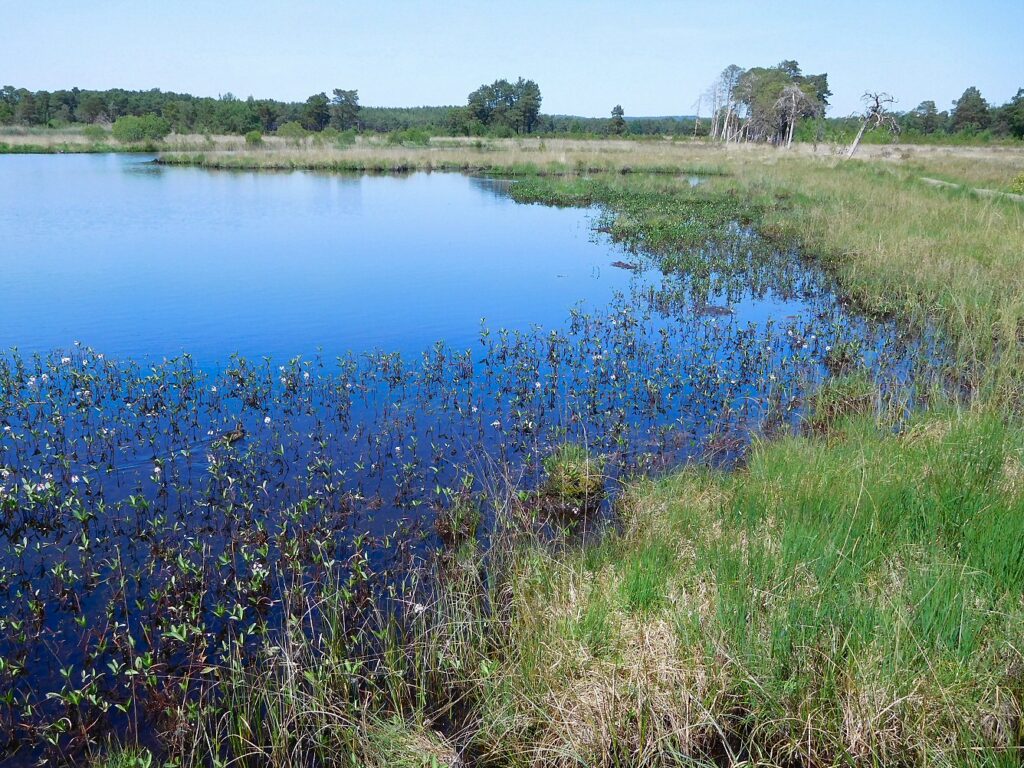

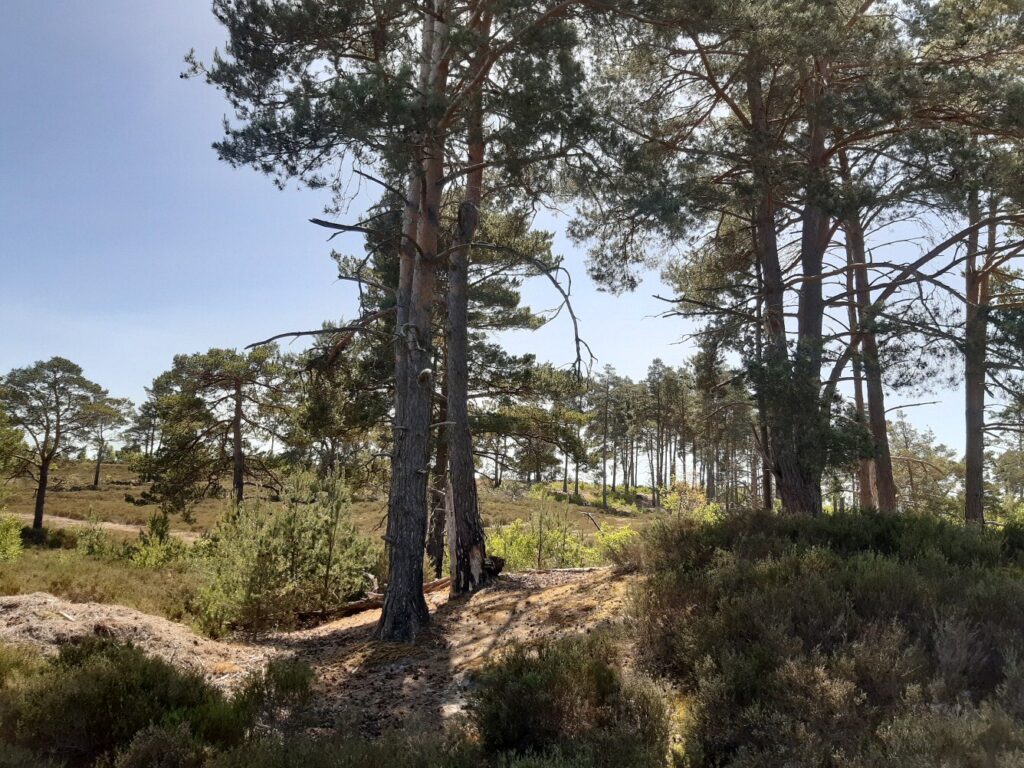
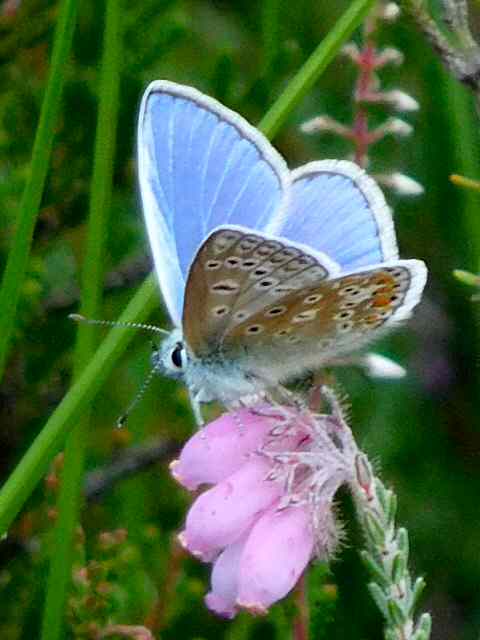
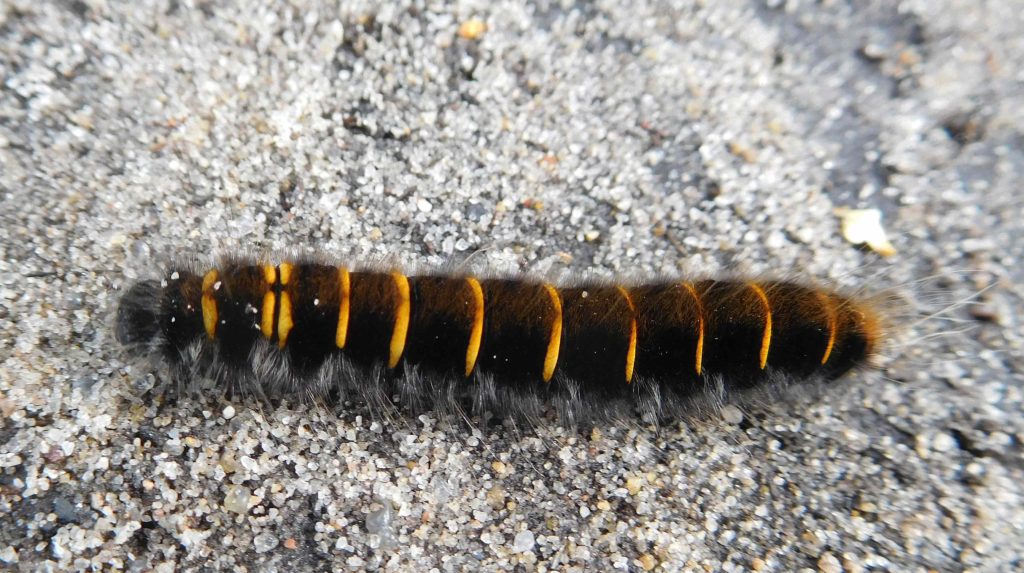
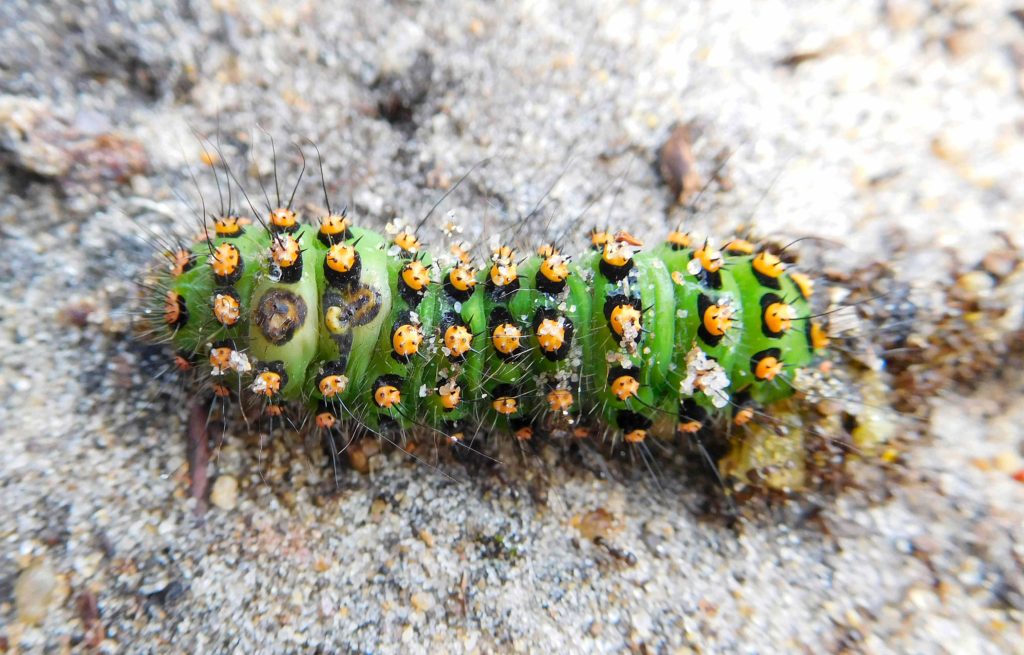
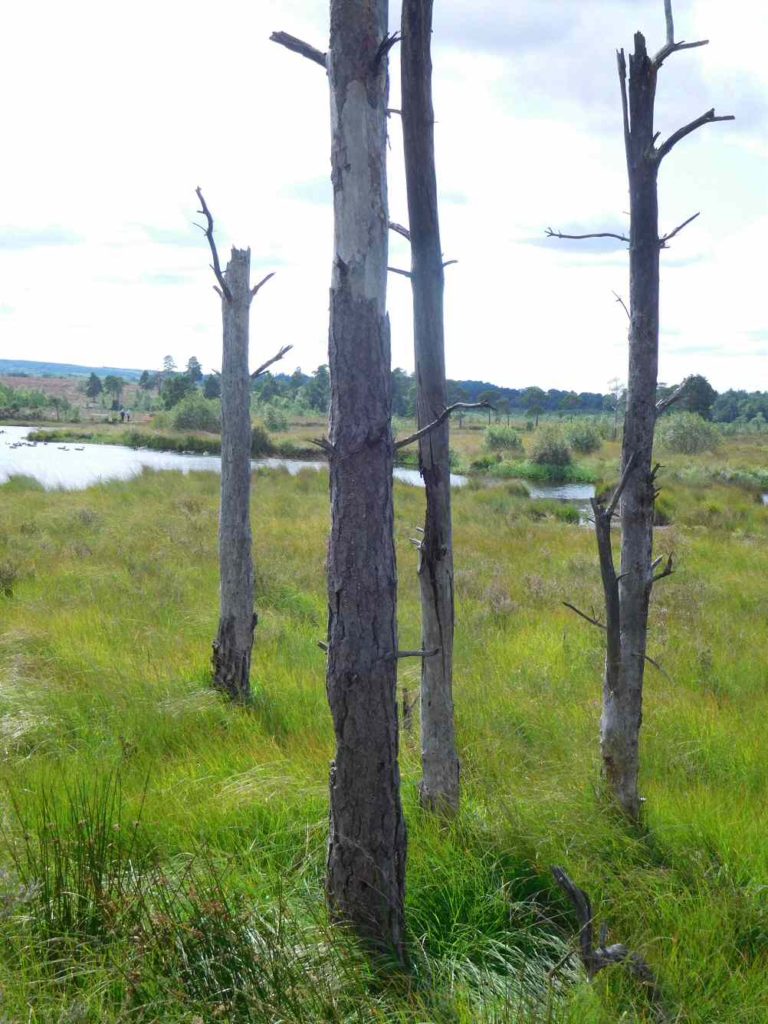
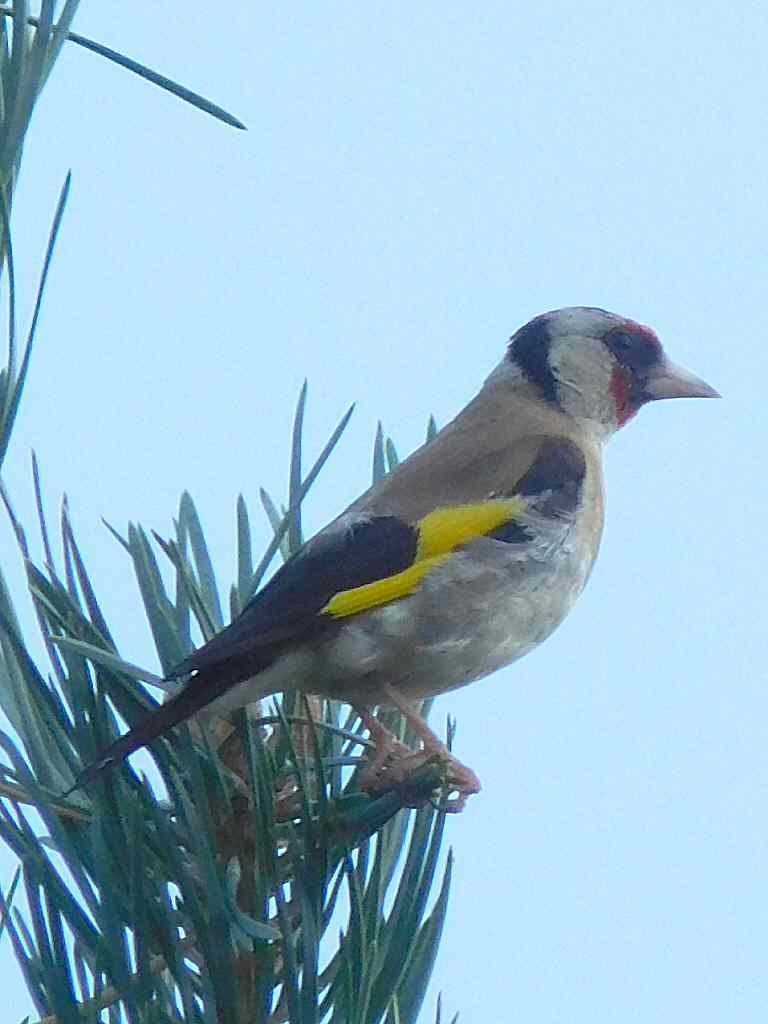
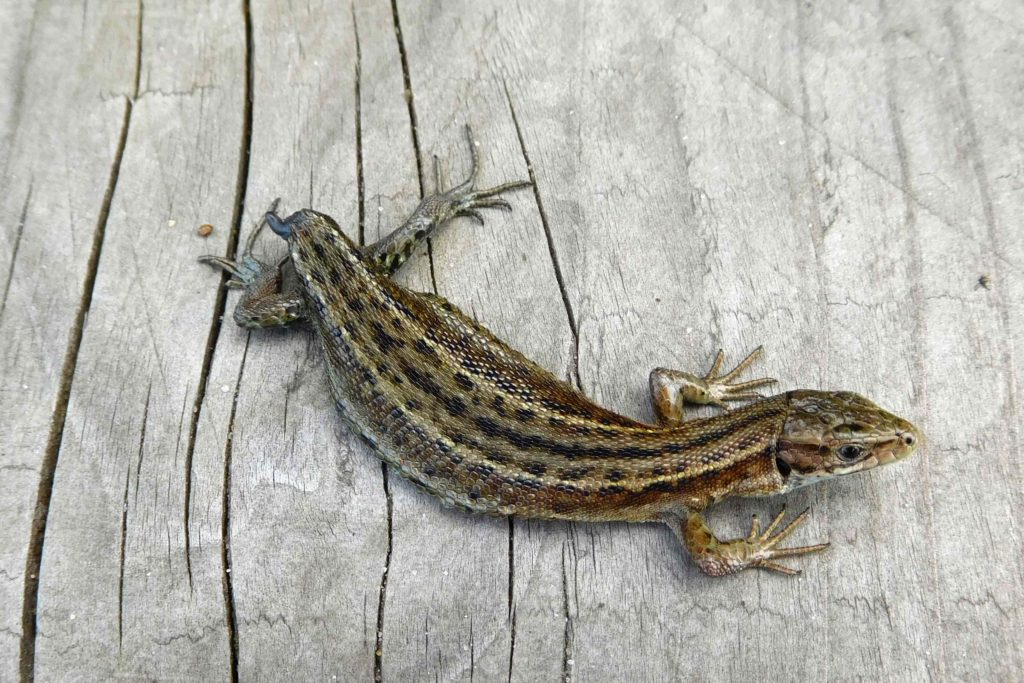
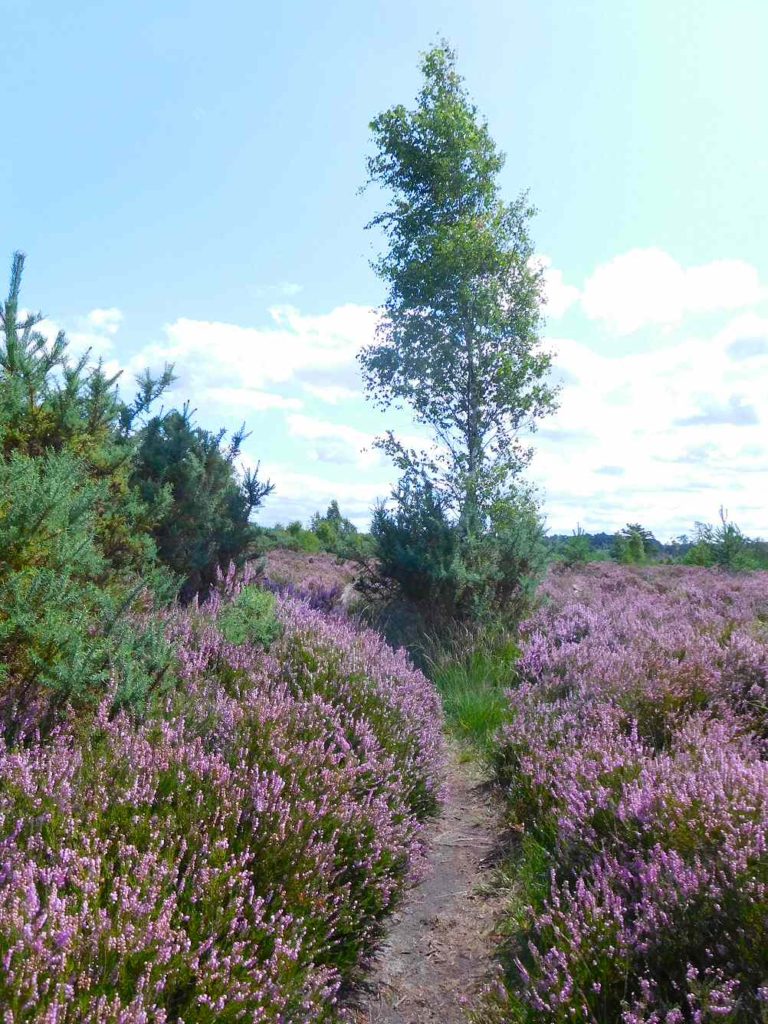
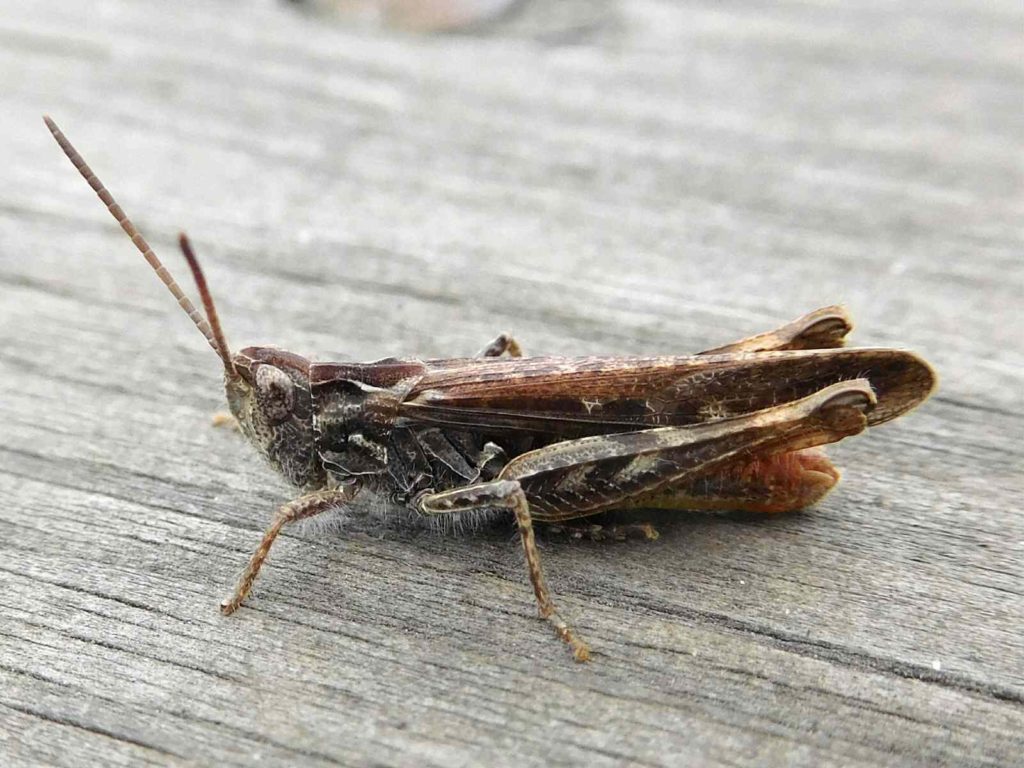
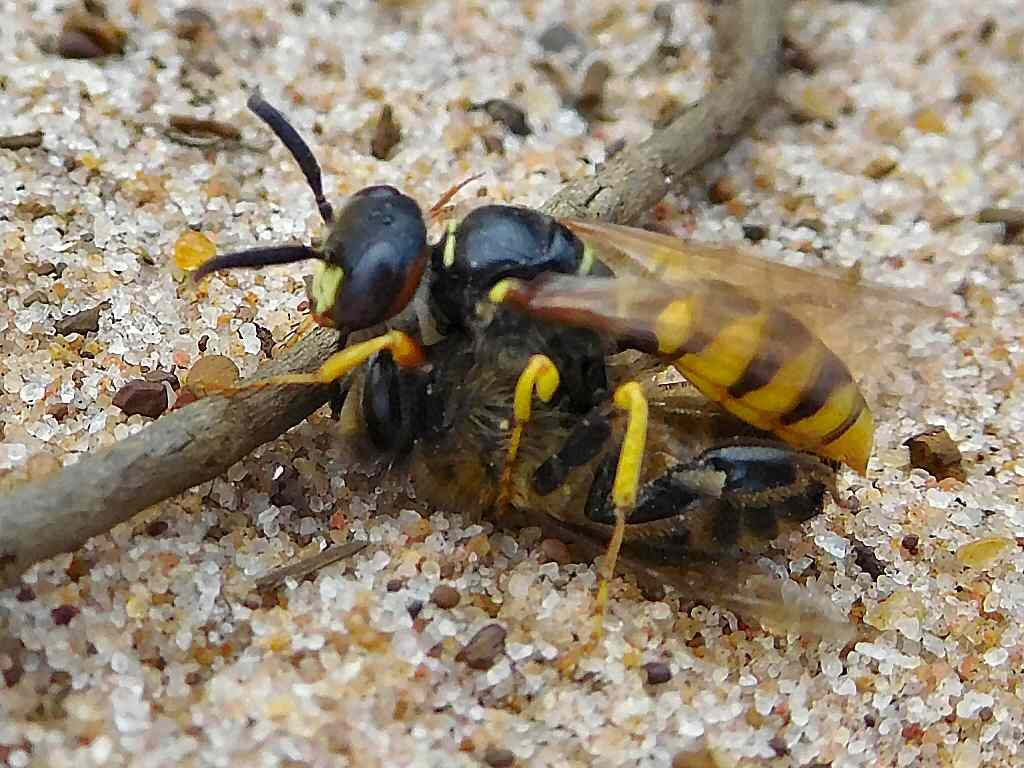
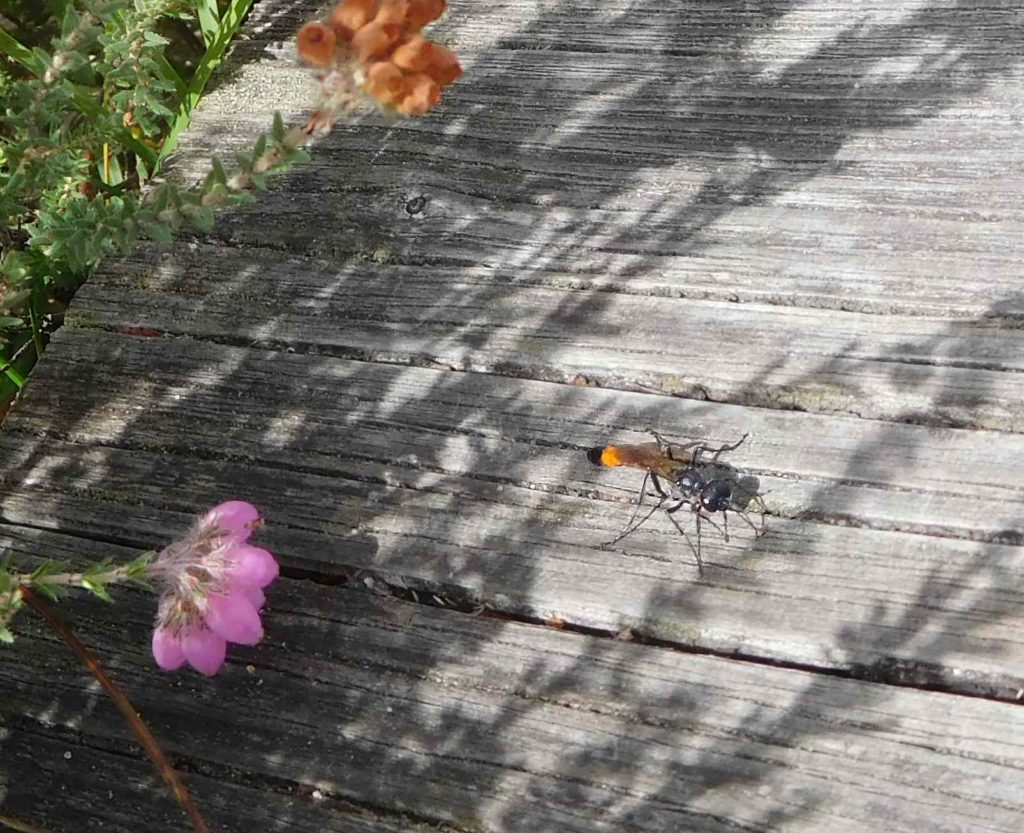
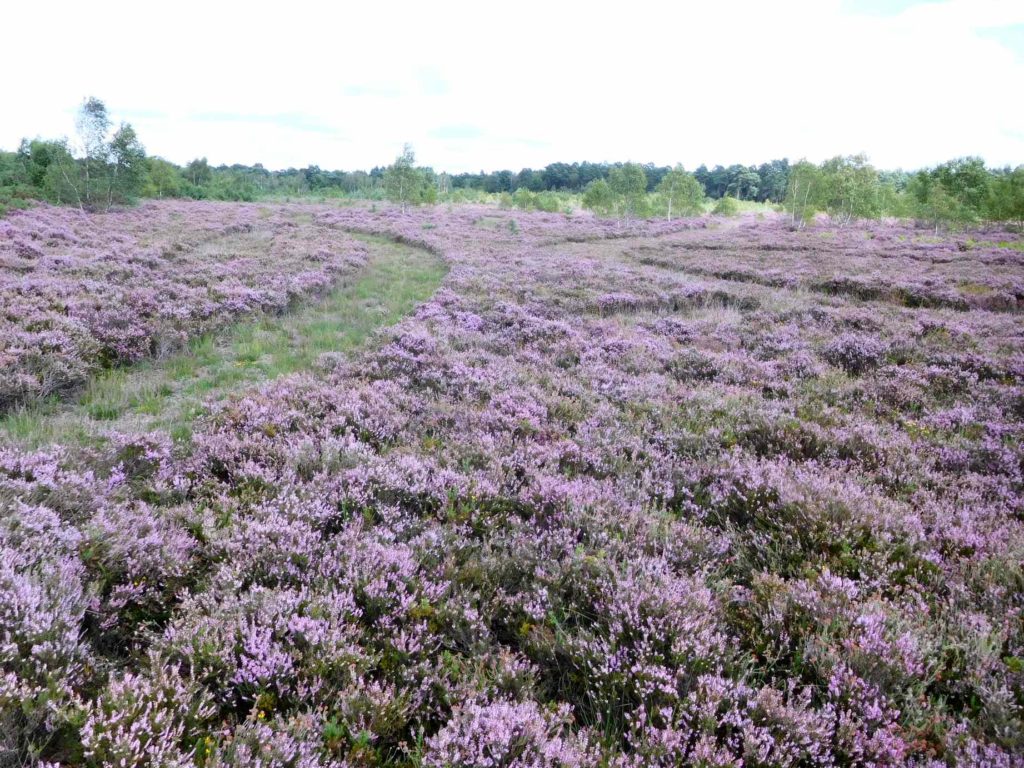
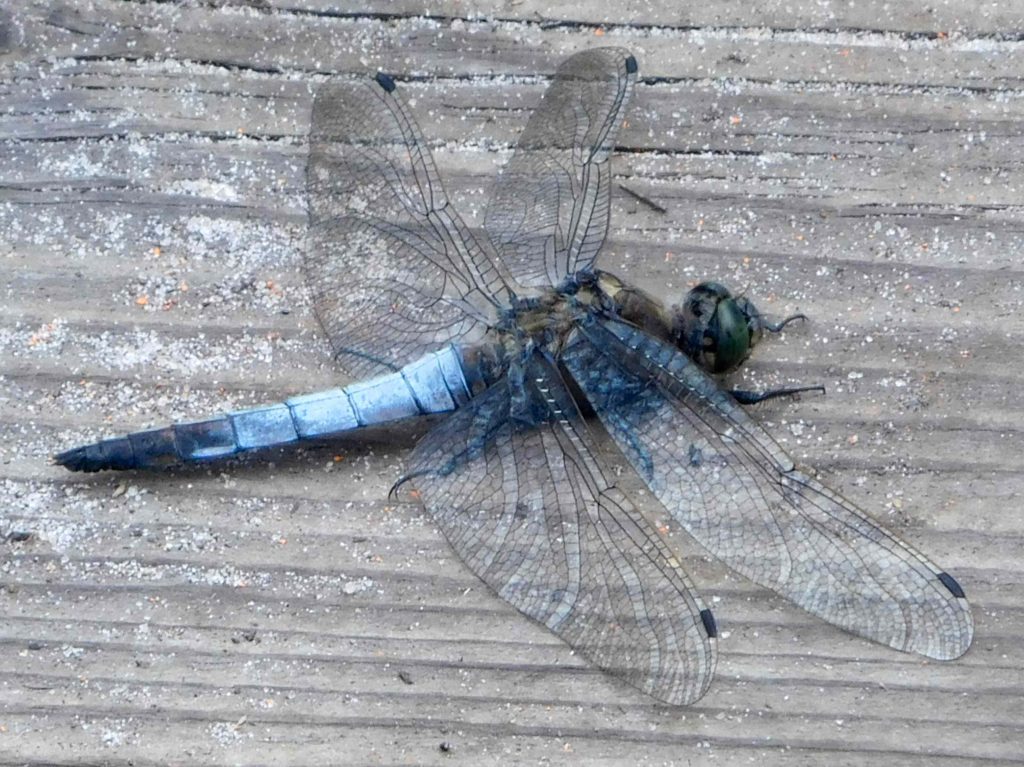
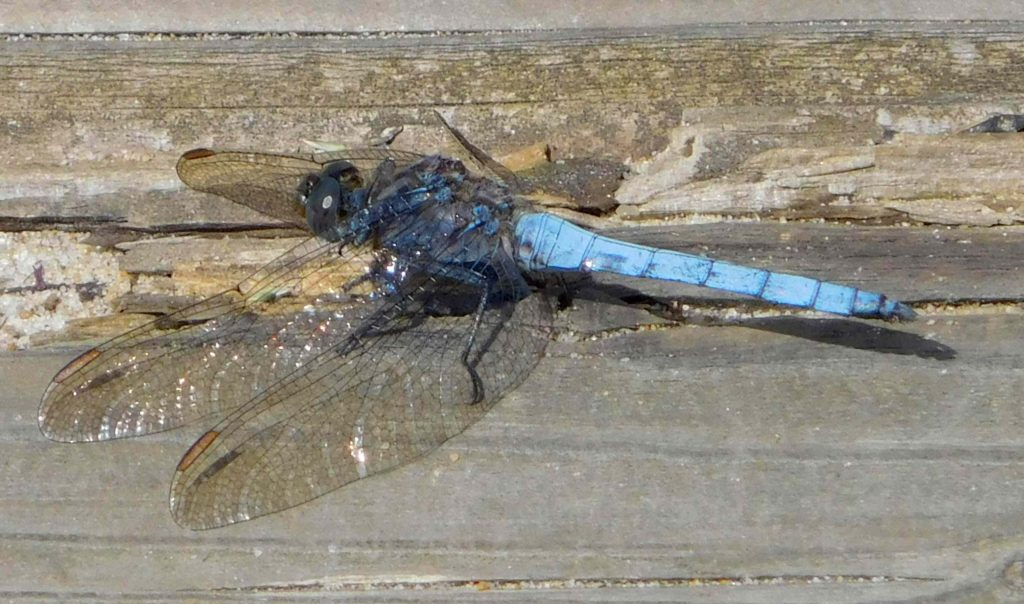
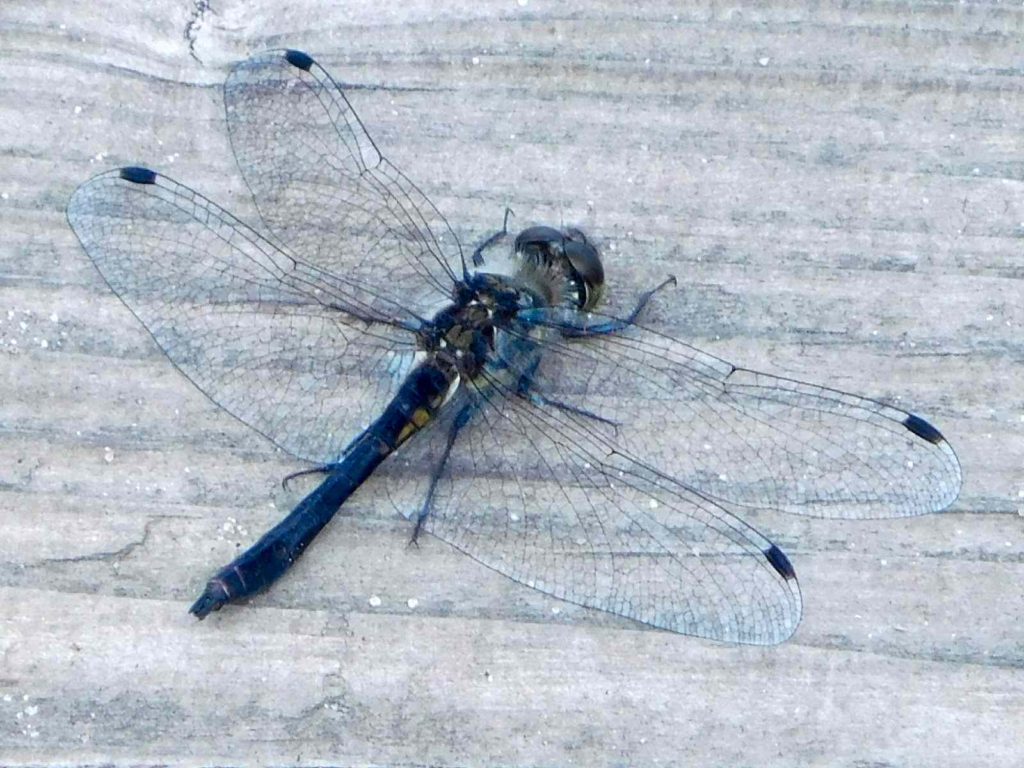
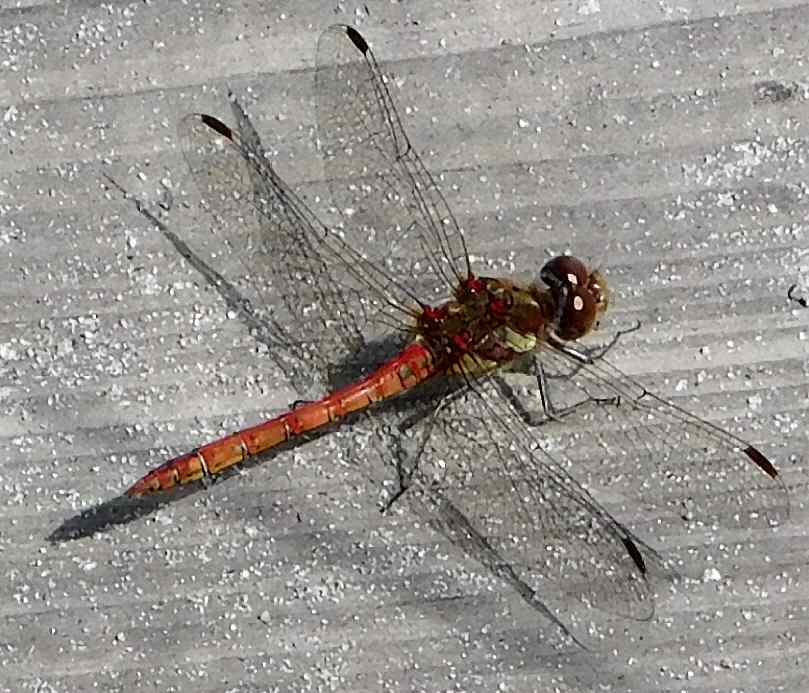
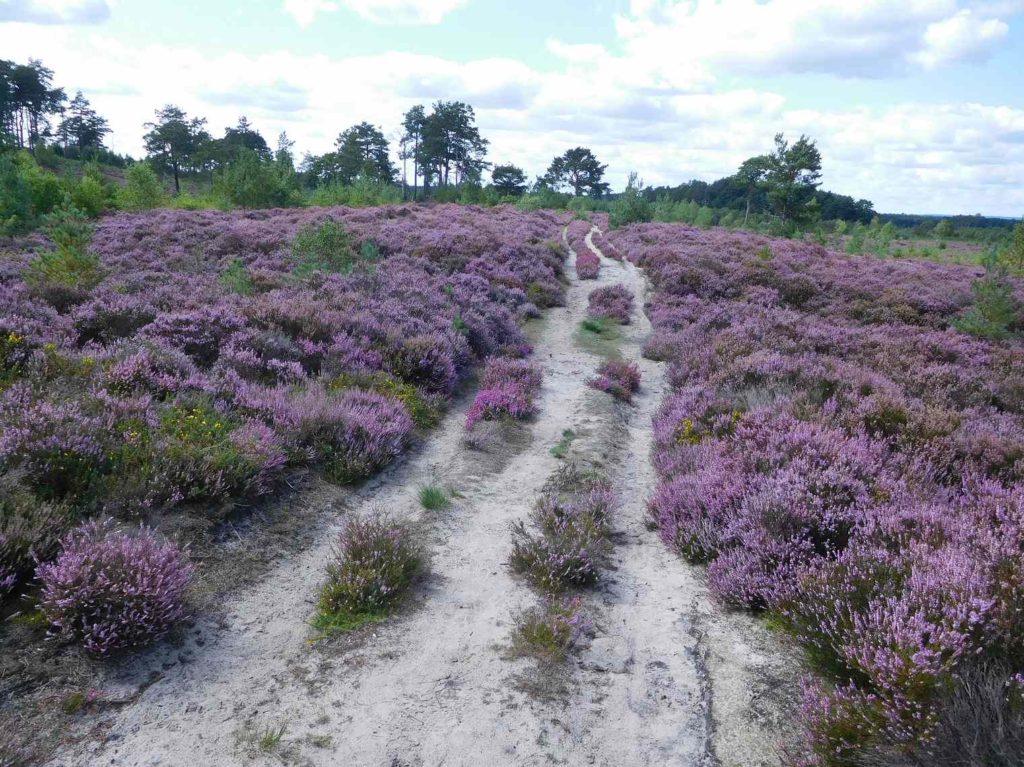
Also saw Common Blue Damselfly, Southern Hawker, Emperor Dragonfly.
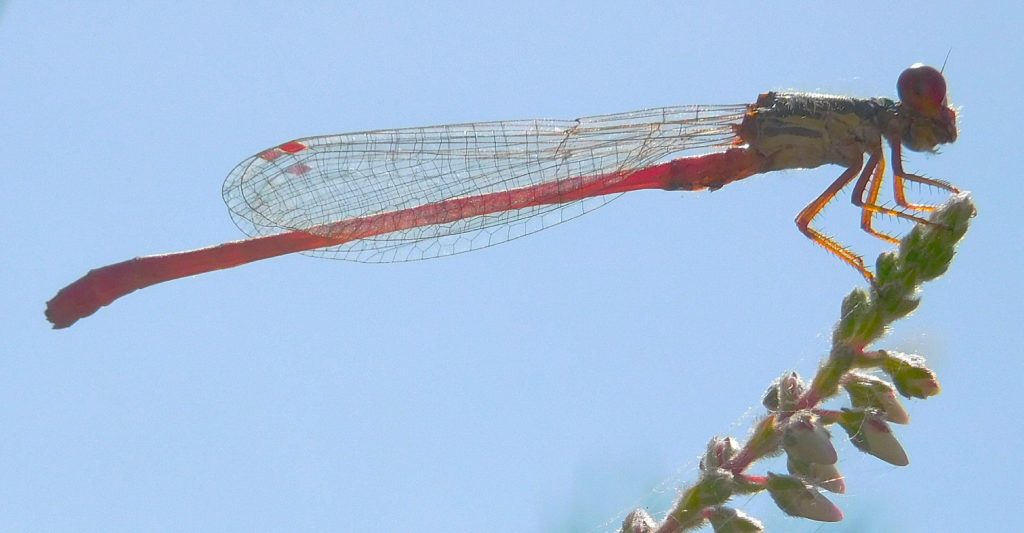
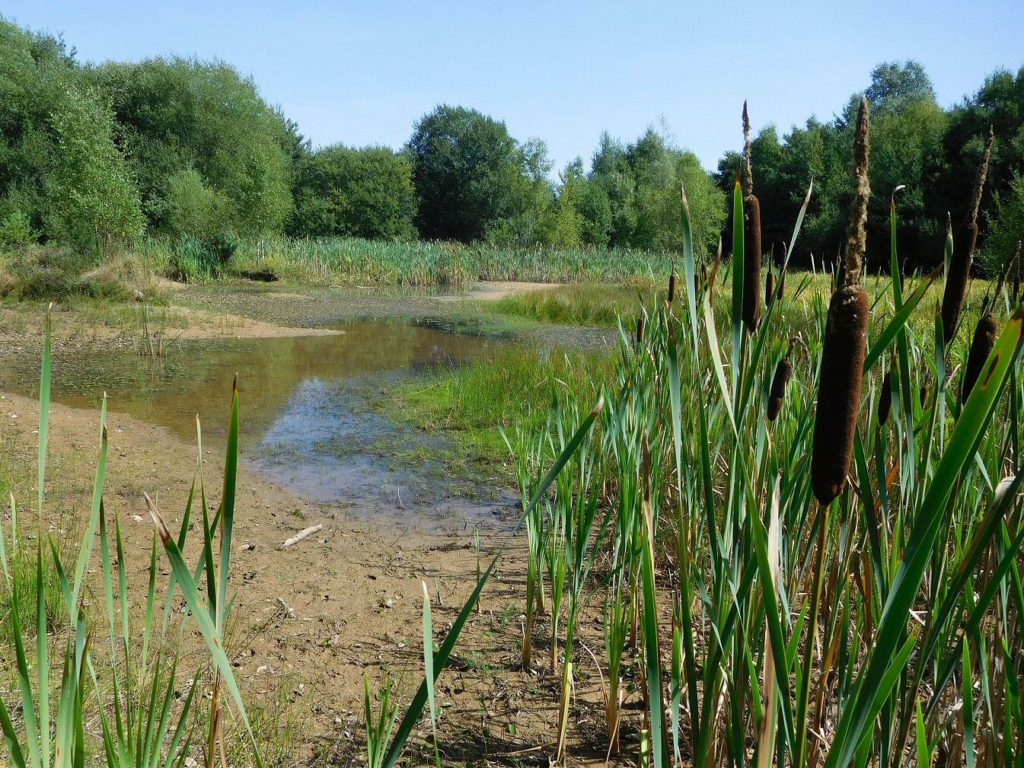
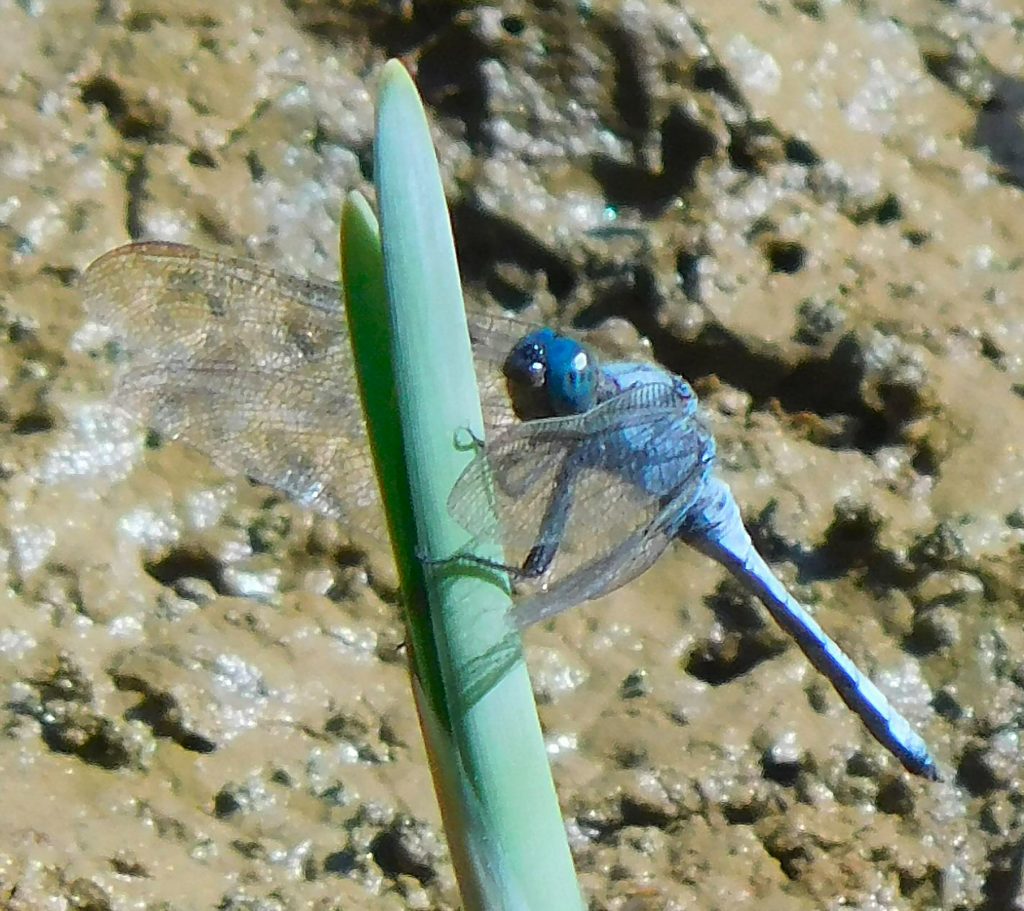
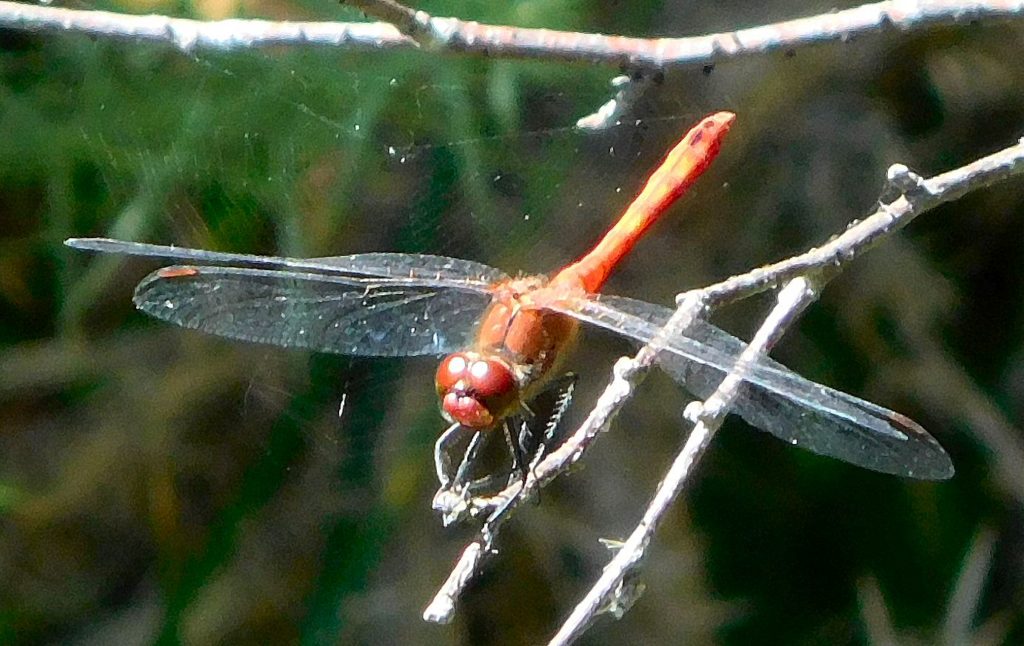
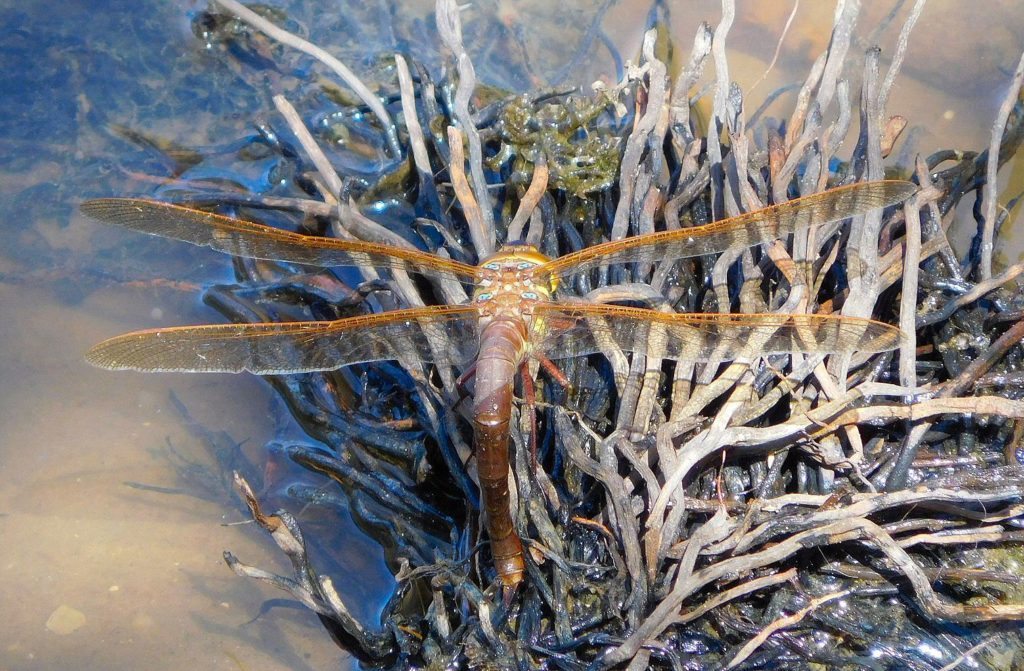
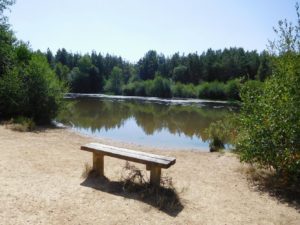
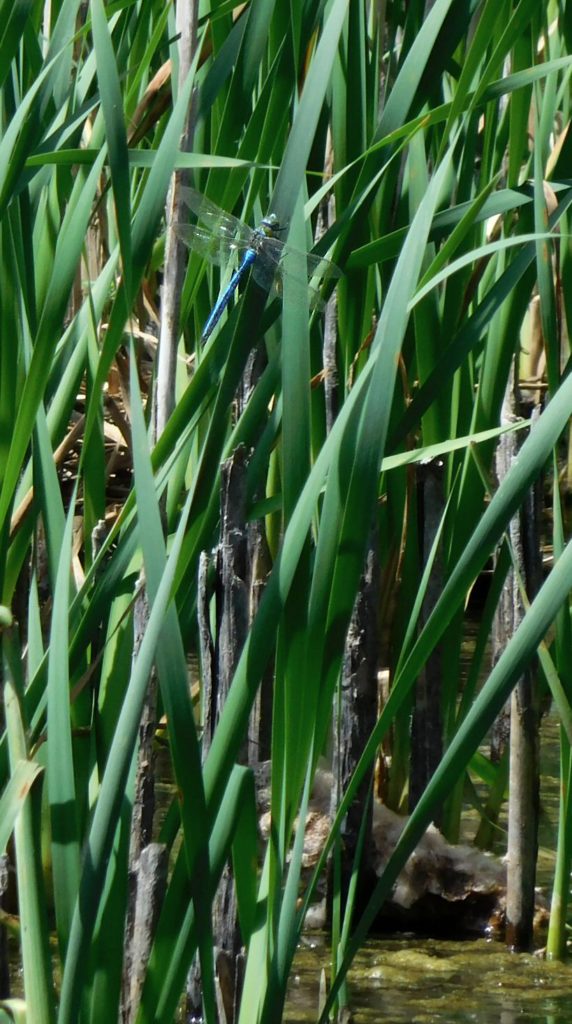
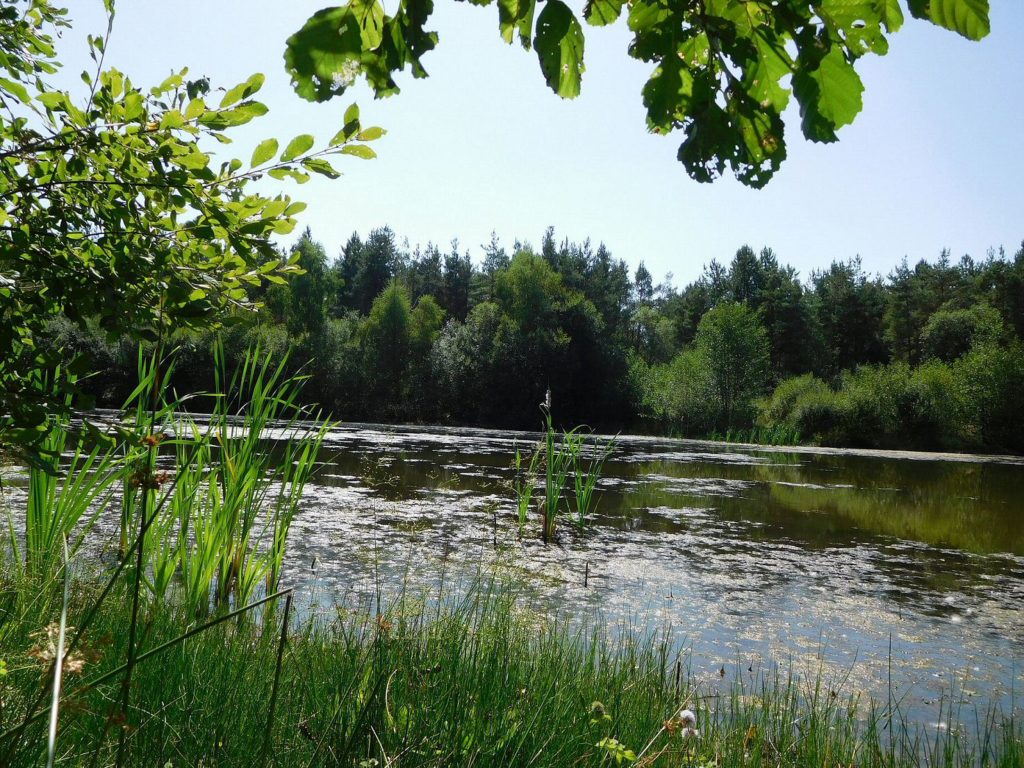
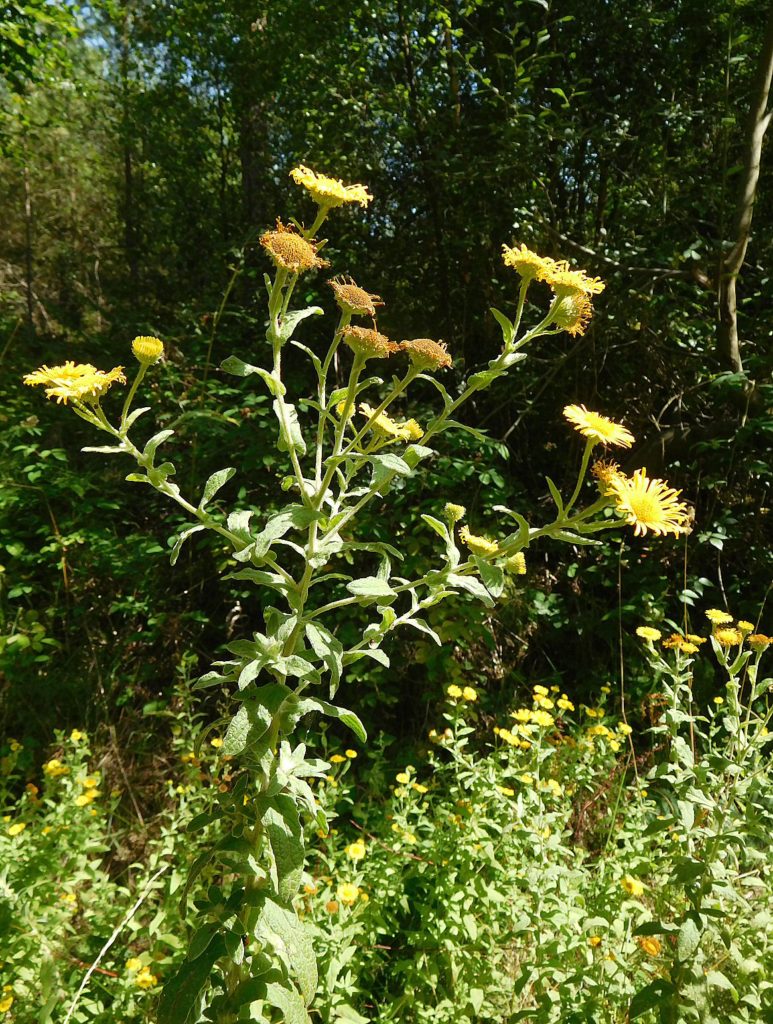
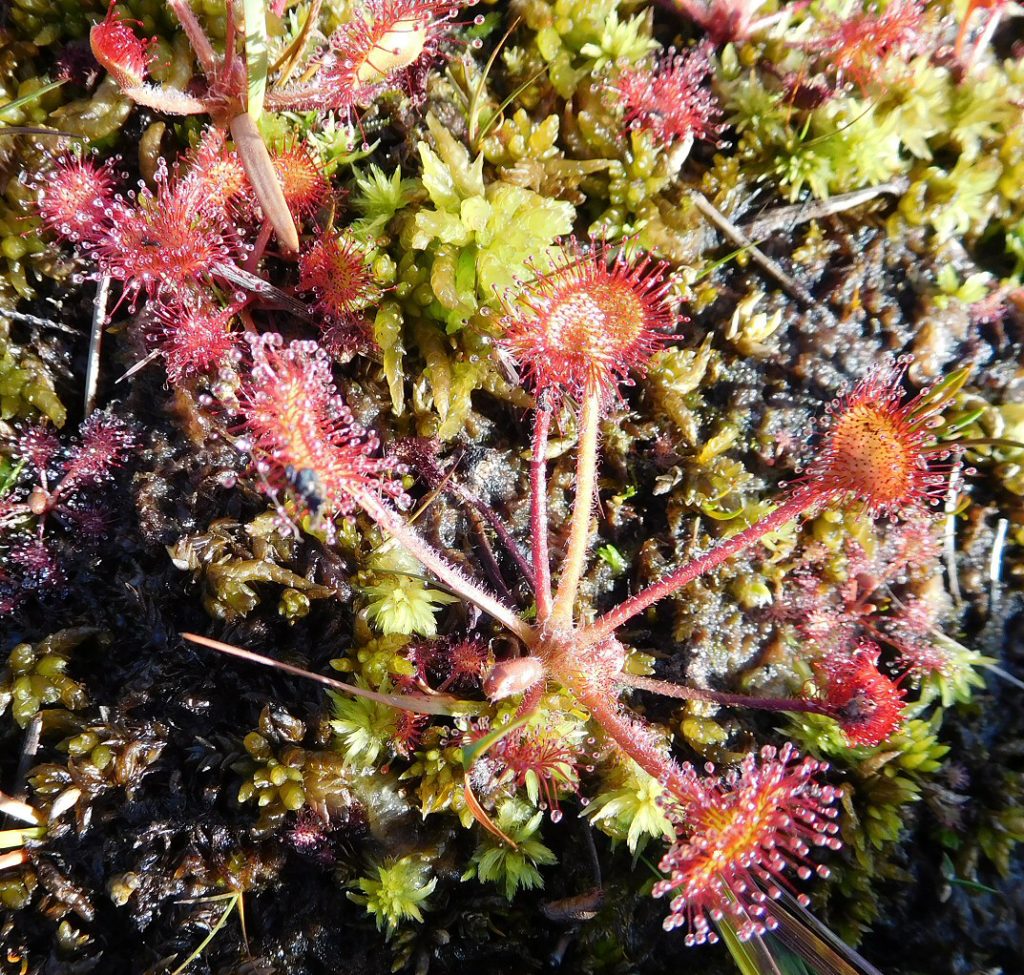
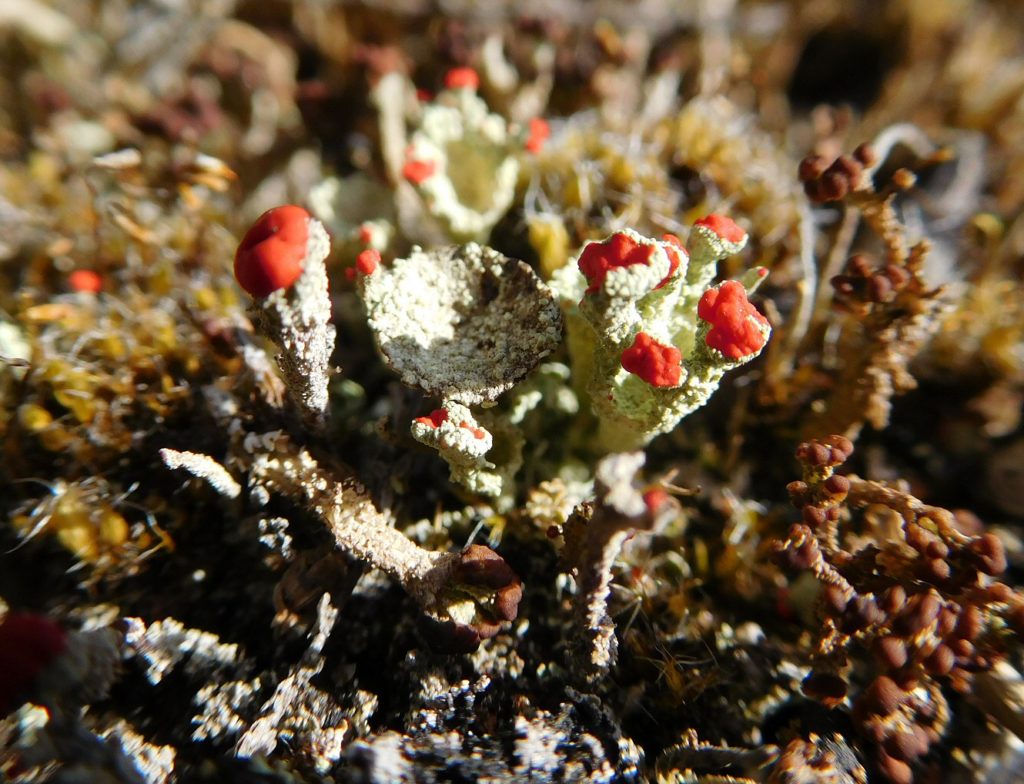
OK, ok, you wanted some dragonflies. There were masses of Black-Tailed Skimmers chasing about in groups at Pudmore Pond. Black Darters, Common Blue Damselflies, and Small Red Damselflies skittered about the smaller ponds. A large Hawker or two dashed past, unidentifiable, probably Southern Hawker. A Keeled Skimmer perched conveniently nearby, daintier than the Black-Tailed.
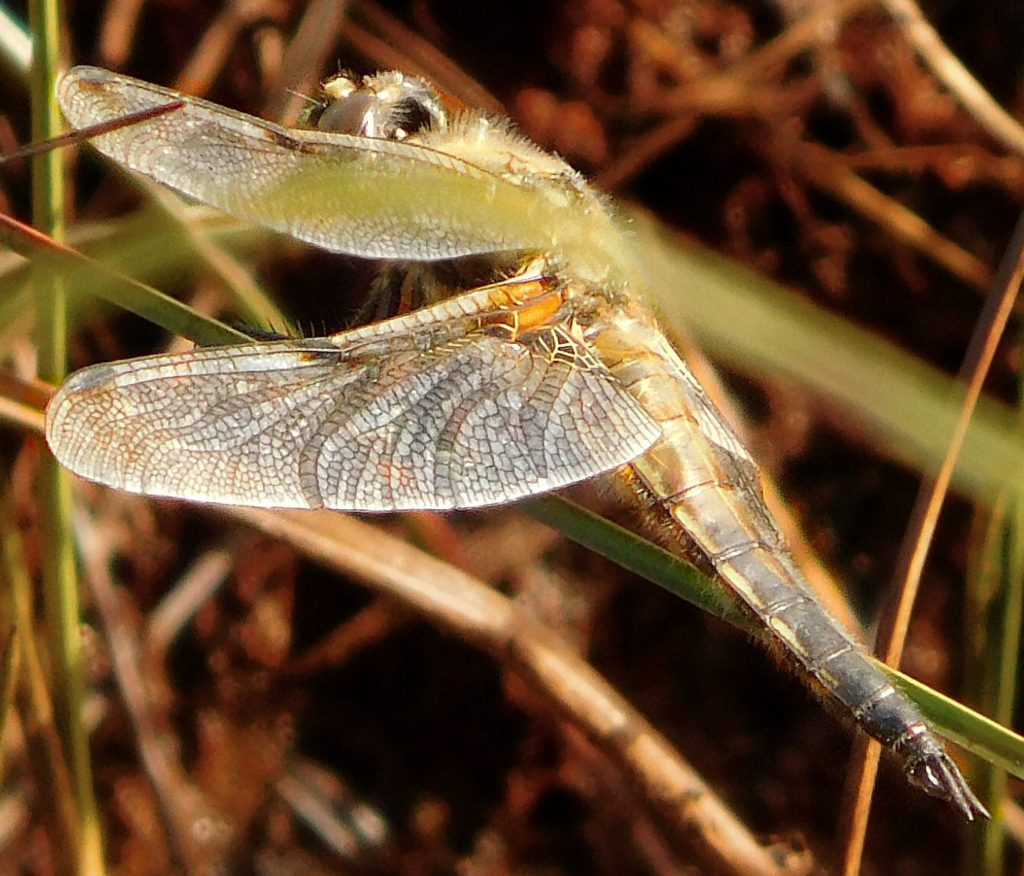
Among the birds, some 50 Swallows were roosting on telegraph wires early in the day. Families of young Stonechats gave grating contact calls, unlike the stone-clicking call of the adults. A Redstart flicked its tail in the bushes. Skylarks rose and sang almost too high to see against the clouds over the heathy hills, Shelley described it perfectly in his ‘To a Skylark’: “a flood of rapture so divine”.

Thursley Common on a sunny July day can shimmer with the wings of dragonflies. Today, hundreds of Keeled Skimmers, joined by plenty of other species large and small – from the mighty Emperor to the dainty Small Red Damsel, made the air seem to sparkle as brightly as the water beside the boardwalk. There were Keeled Skimmers perched alertly on stalks, ready to spring into the air at an instant’s notice; Keeled Skimmers in tussling pairs, their wings rustling and scuffling as they clashed in brief, brutal territorial disputes; Keeled Skimmers in groups of four or five, dashing and swerving over the water; Keeled Skimmers over every pond, bog pool, and lakeside.
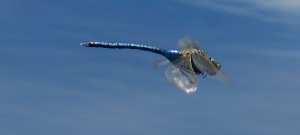
Over one quieter pool, an Emperor Dragonfly patrolled in more stately fashion, almost hovering, drifting forward slowly as if a helicopter pilot was holding the machine’s collective drive stick just a little forward of the hover position, its striped blue tail gleaming in the sun.
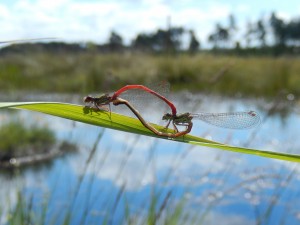
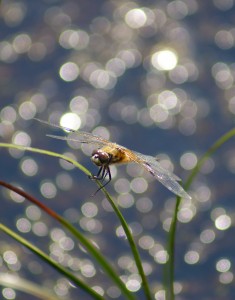
Many of the Odonata were busy laying eggs, from the Skimmers to the damselflies. One or two Black Darters were about: they can be here in large numbers later in the season.

On the sandy heath, the Sand-Wasp Ammophila sought her insect prey, her distinctive shape almost dragonfly-like with an extremely elongated red waist leading to a plump ‘tail’ to her abdomen.
Overhead, a Hobby dashed and stooped, handsome through binoculars, moustachioed, spotted below, its long scything wings like a giant Swift easily outpacing the fastest dragonfly. Below, a lizard rested unobtrusively at the edge of the boardwalk, ready to scuttle into the heather at any threat; another a yard further on. A Reed Bunting rasped out its short scratchy song, skreek, skreek, skrizzick. A Curlew called once; a Skylark soared invisibly high into the blue, singing as if John Keats were at hand to report on the beauty of its song.
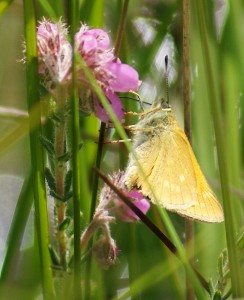
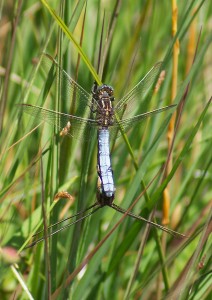
Aah. Ducks with ducklings. Coots with Cootlings. Geese with Goslings. Swans with Cygnets. Moorhens with … chicks. Whatever the charmingly mediaeval diminutive nouns, it was a day for walking around the London Wetland Centre, enjoying the ‘sunny spells’ and the bright display of wild flowers, artfully seeded, and delighting in Mother Nature’s ability to conjure up fluffy sentimental feelings about roughly duck-shaped balls of fluffy down feathers.
I’d gone alone to see if there were any interesting dragonflies, but there weren’t many about: a warmer day is always better. But there was a Black-Tailed Skimmer basking on one of the ‘wildside’ paths.
Apart from that, I glimpsed one Hawker dragonfly – probably a Hairy dragonfly, as the only kind other than the Emperor seen there in the past month; and there were plenty of Common Blue and Bluetail damselflies about.
As for butterflies, it was alarmingly empty: a couple of meadow browns, a small white or two, and a female brimstone the highlight. My alarm at the lack of insects in general in England is growing. If it’s neonicotinoids – hot on the heels of all the earlier insecticides, many now rightly banned for their destructive side-effects on wildlife – then we are watching a manmade calamity. The BBC noted that some ditch water was toxic enough to be used, just as it was, as an insecticide spray for crops. The effect of that on dragonflies can only be imagined: a sad thing, as (living in rivers and ponds rather than on farmland) they have to some degree escaped the disaster that has all but eliminated our farmland birds, bees and butterflies.
But on a dead tree, wildside, was another fluffy-duckling sight, this time from a distinctly arboreal bird.
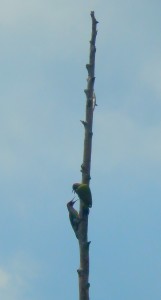
Two Green Woodpeckers, presumably a parent and a newly-fledged juvenile, were clinging to a dead tree, the parent a little higher up, the youngster apparently begging for food with open beak. The family drama went on for several minutes.
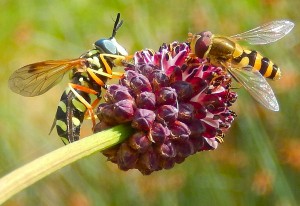
Tiny wildlife shows were visible on the flowers: here, two hoverflies of different species, busy being Batesian mimics of dangerously stinging wasps (but harmless as doves) are feeding, slow and relaxed in the sunshine, on the small flowers in a Great Burnet’s flowerhead. They didn’t seem at all bothered by each other, or by any risk from predators. But despite their glorious colours, it was duckling day today.